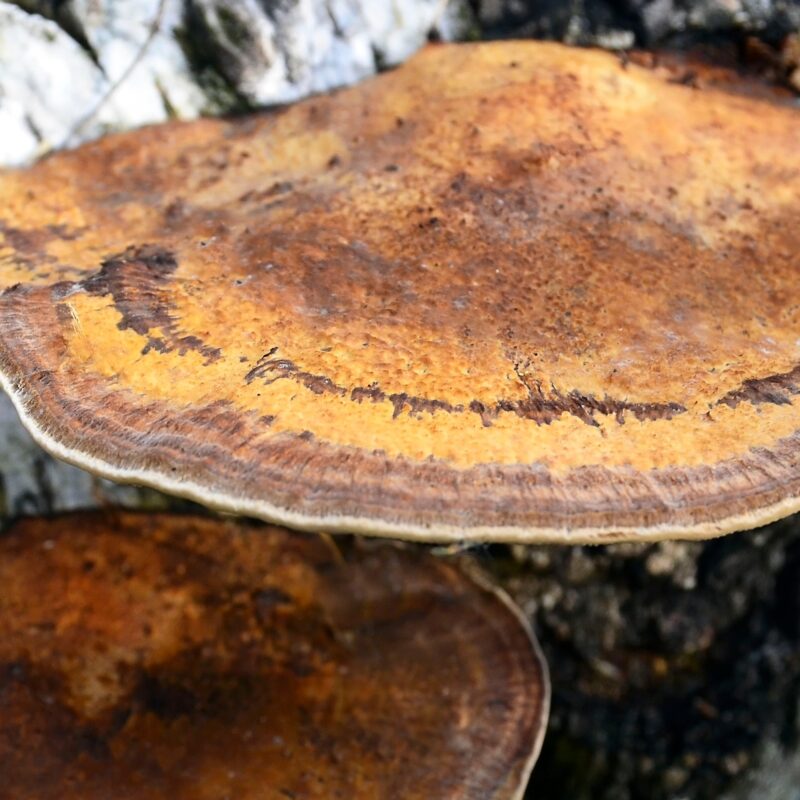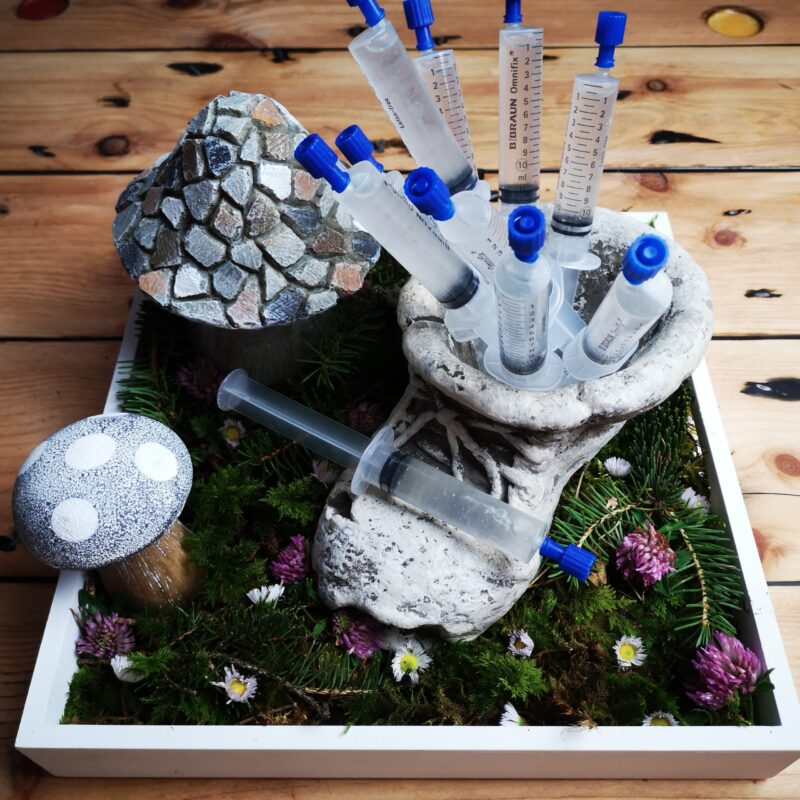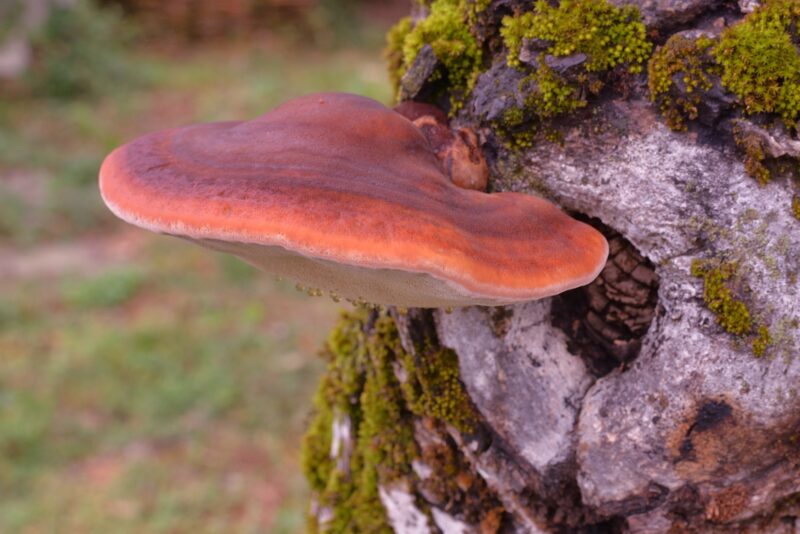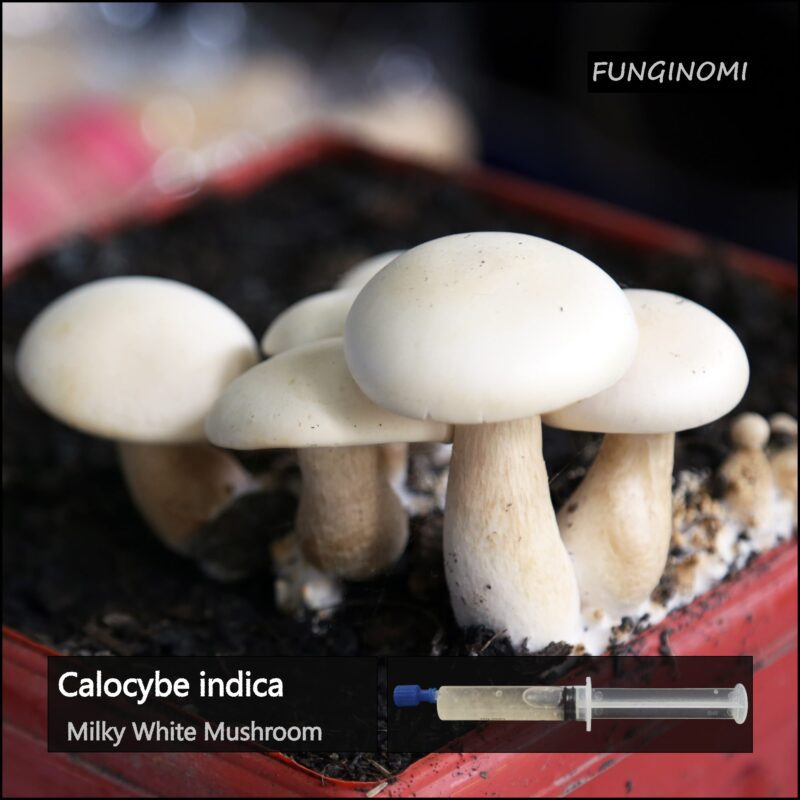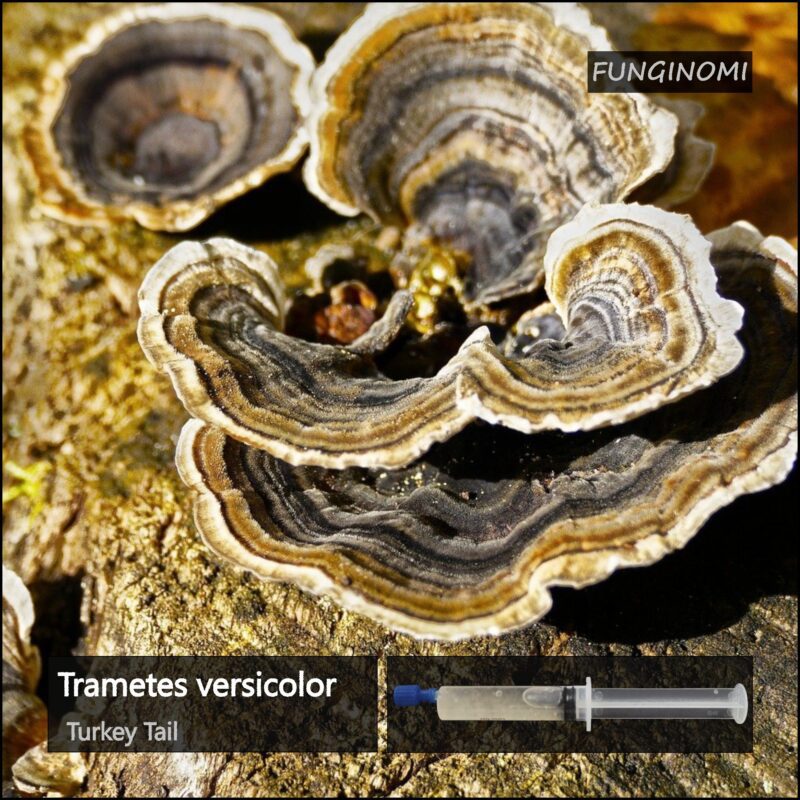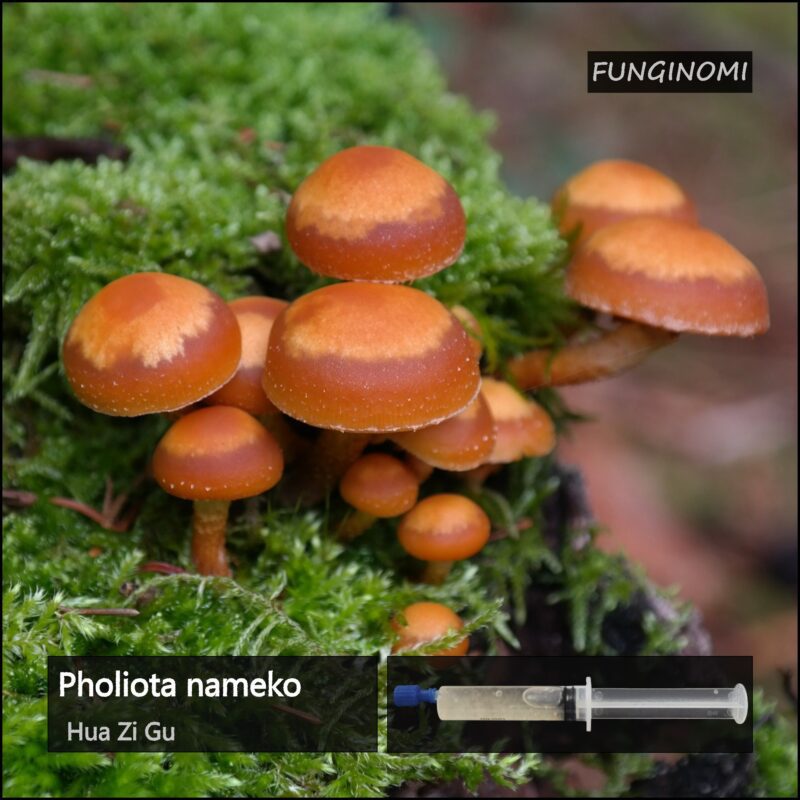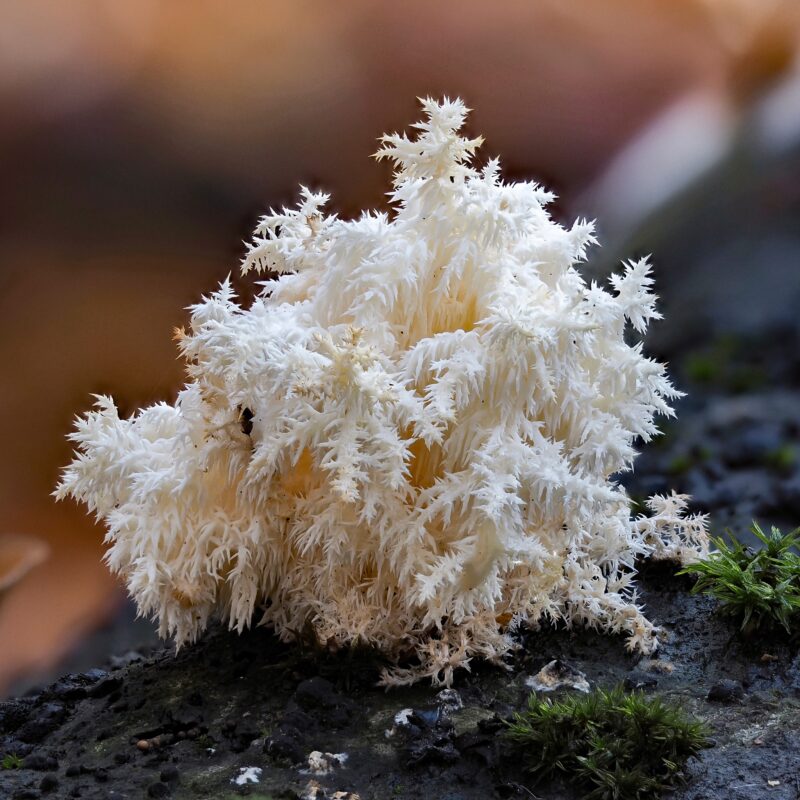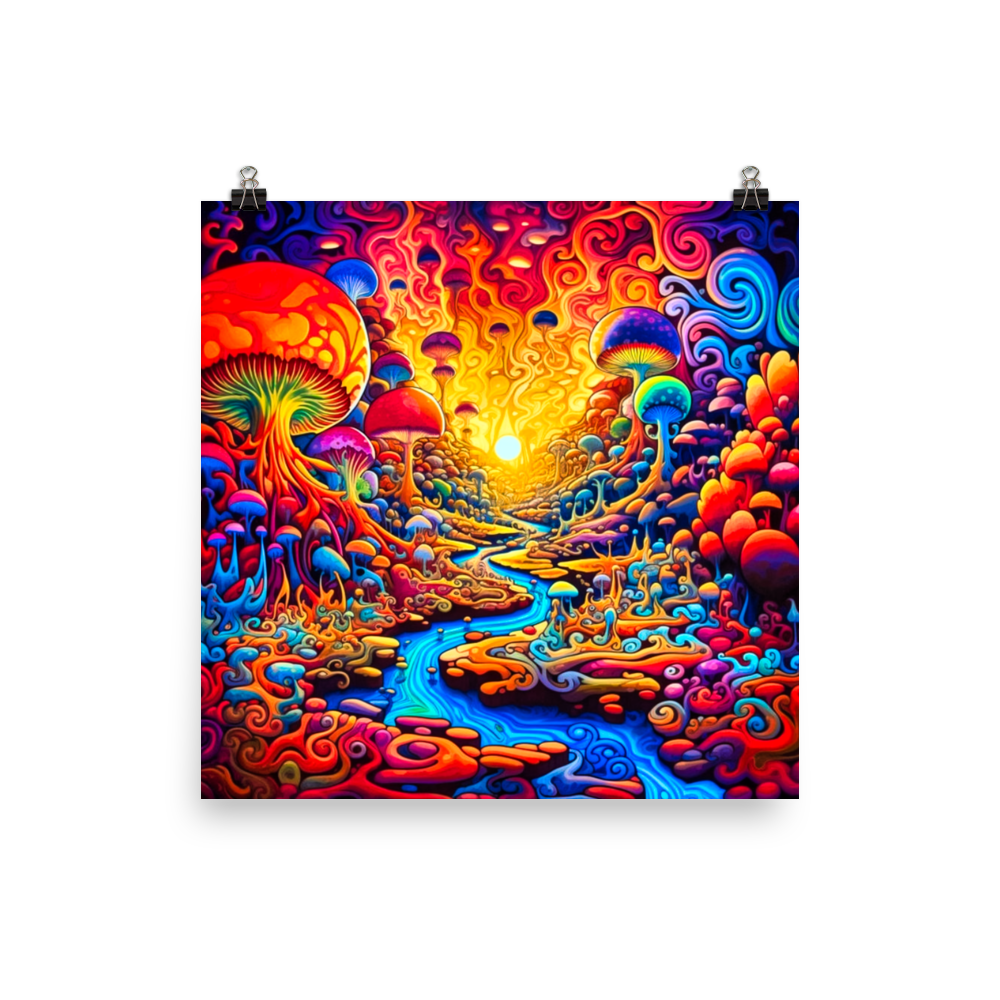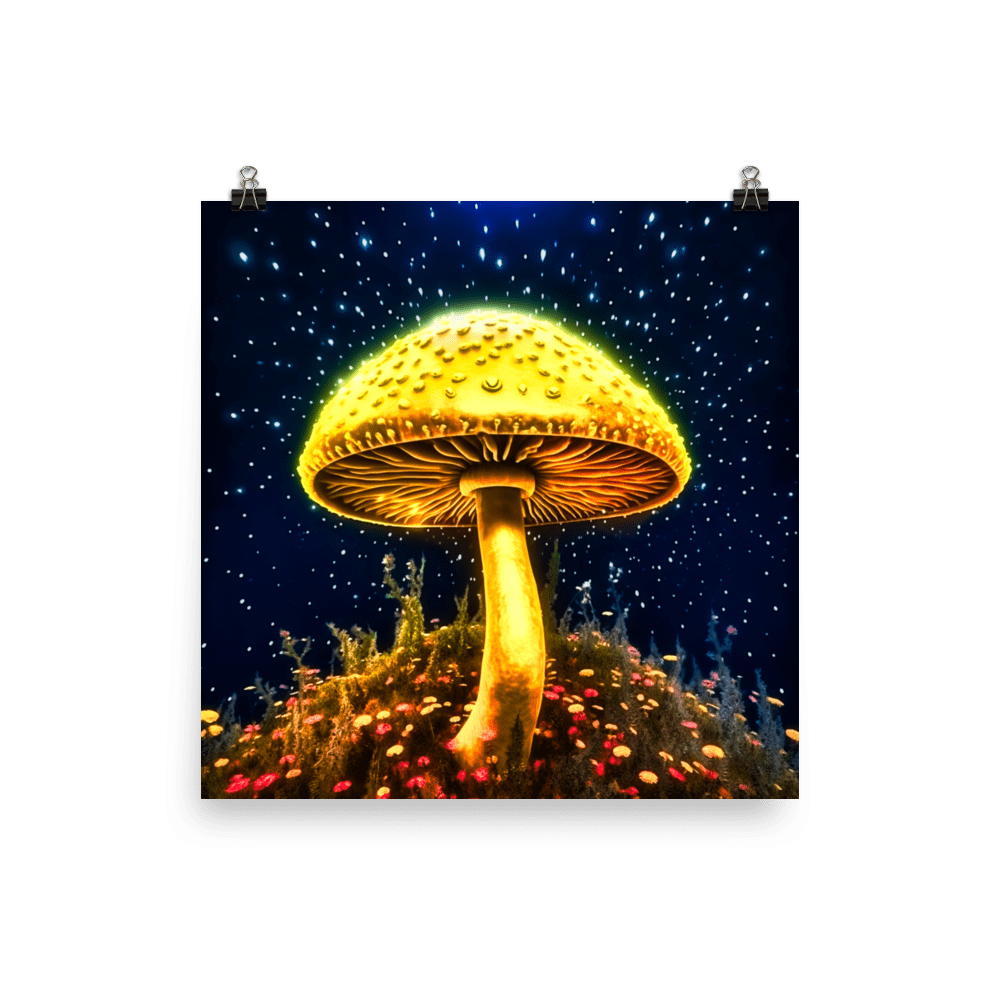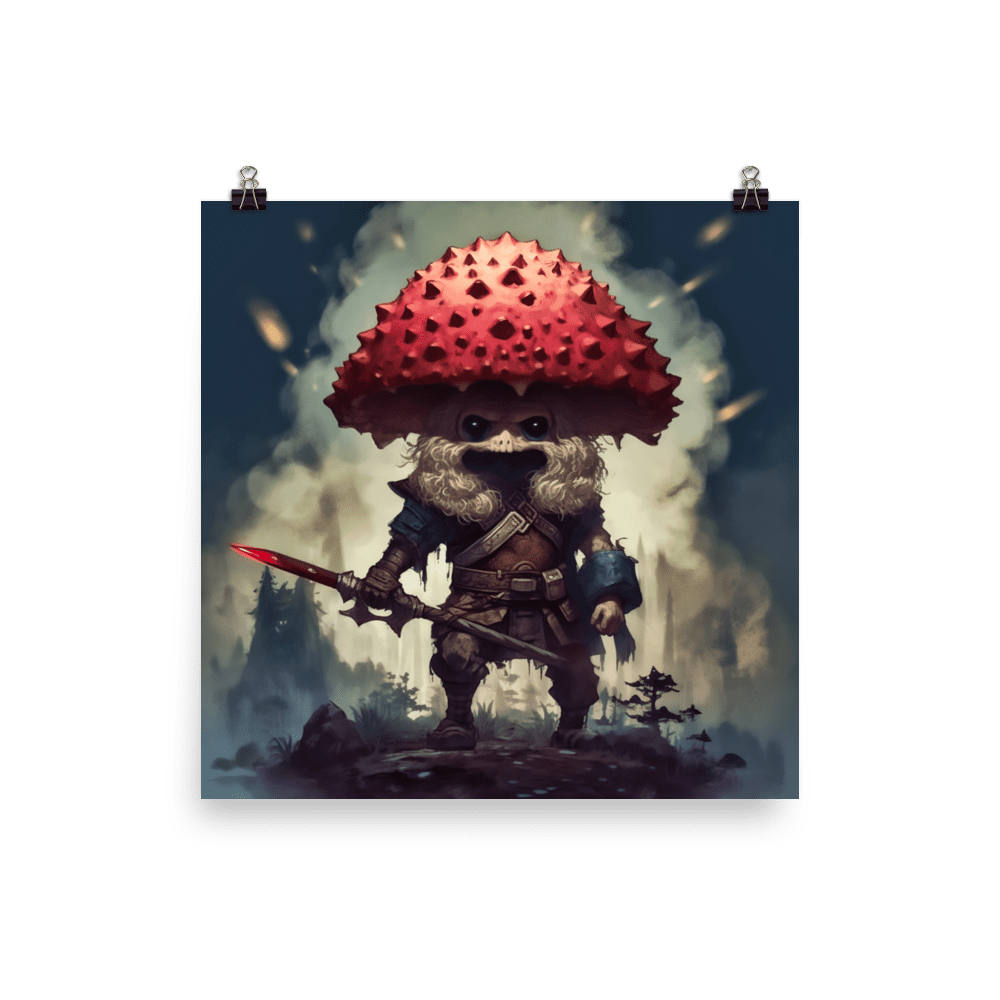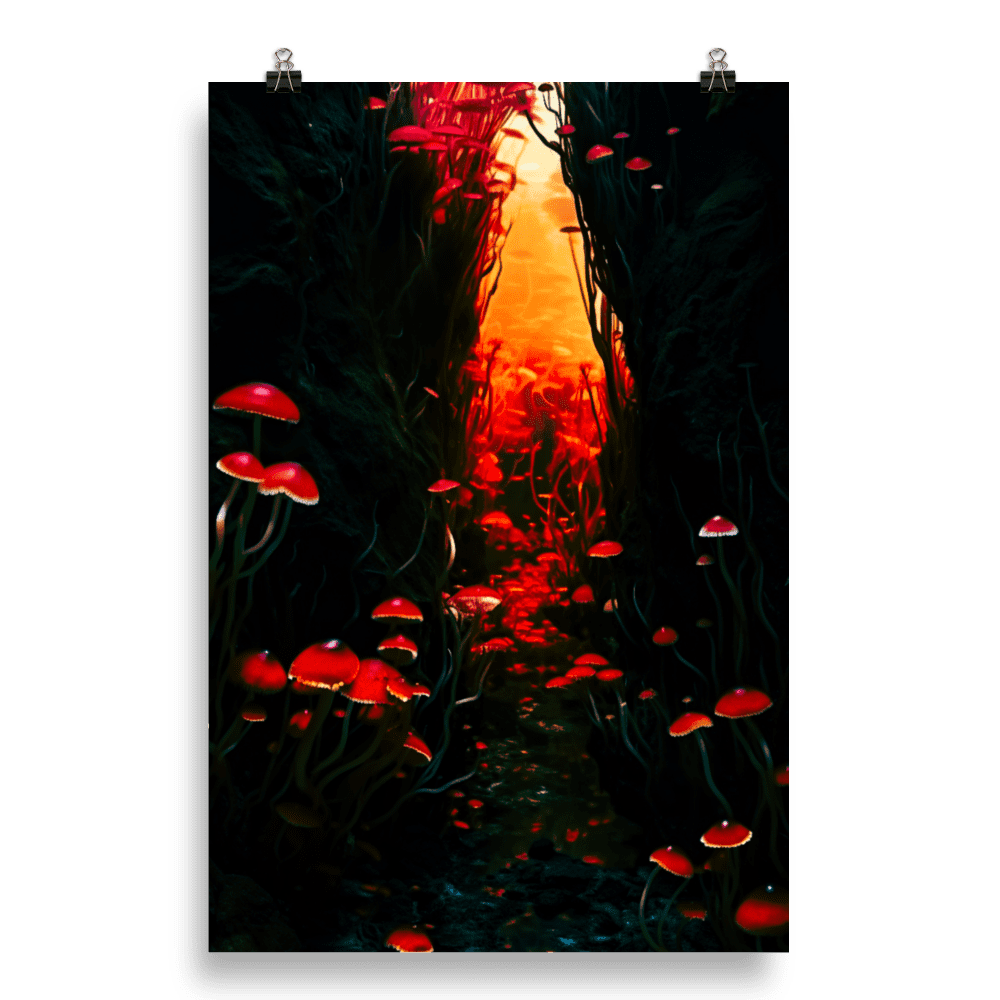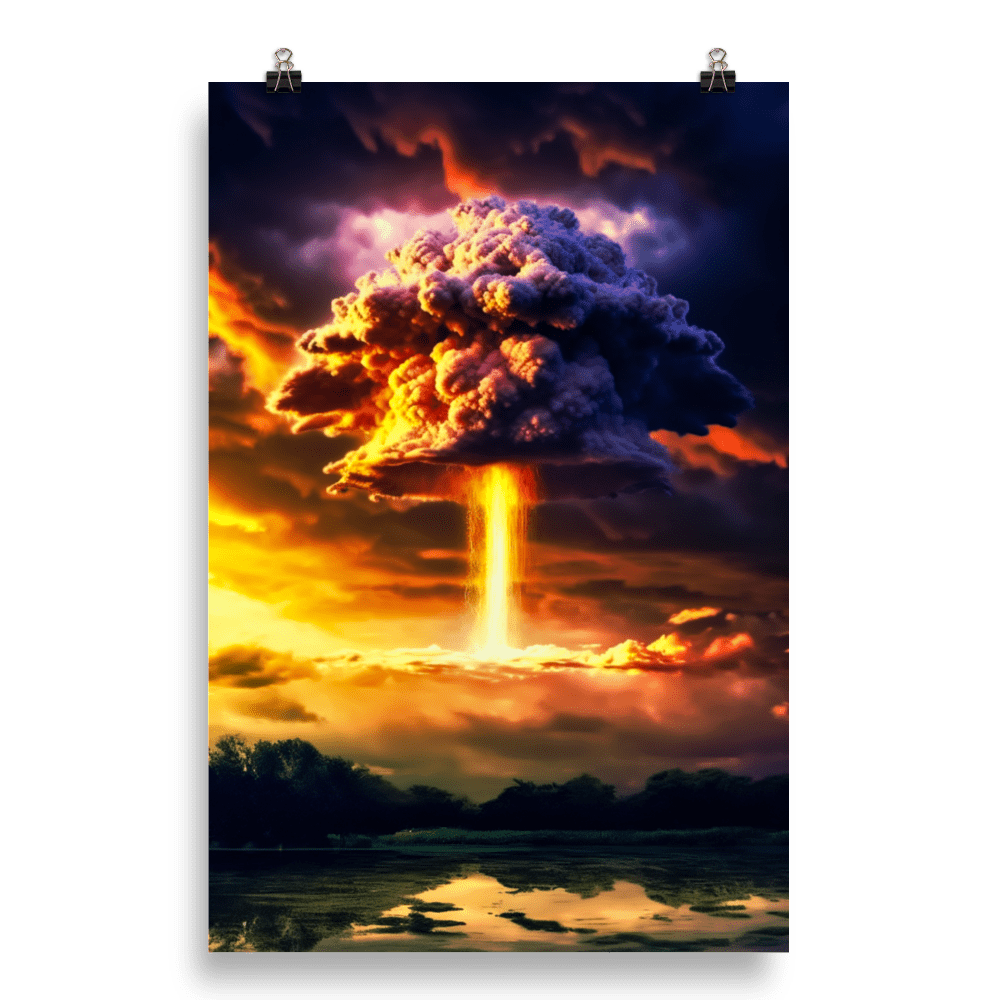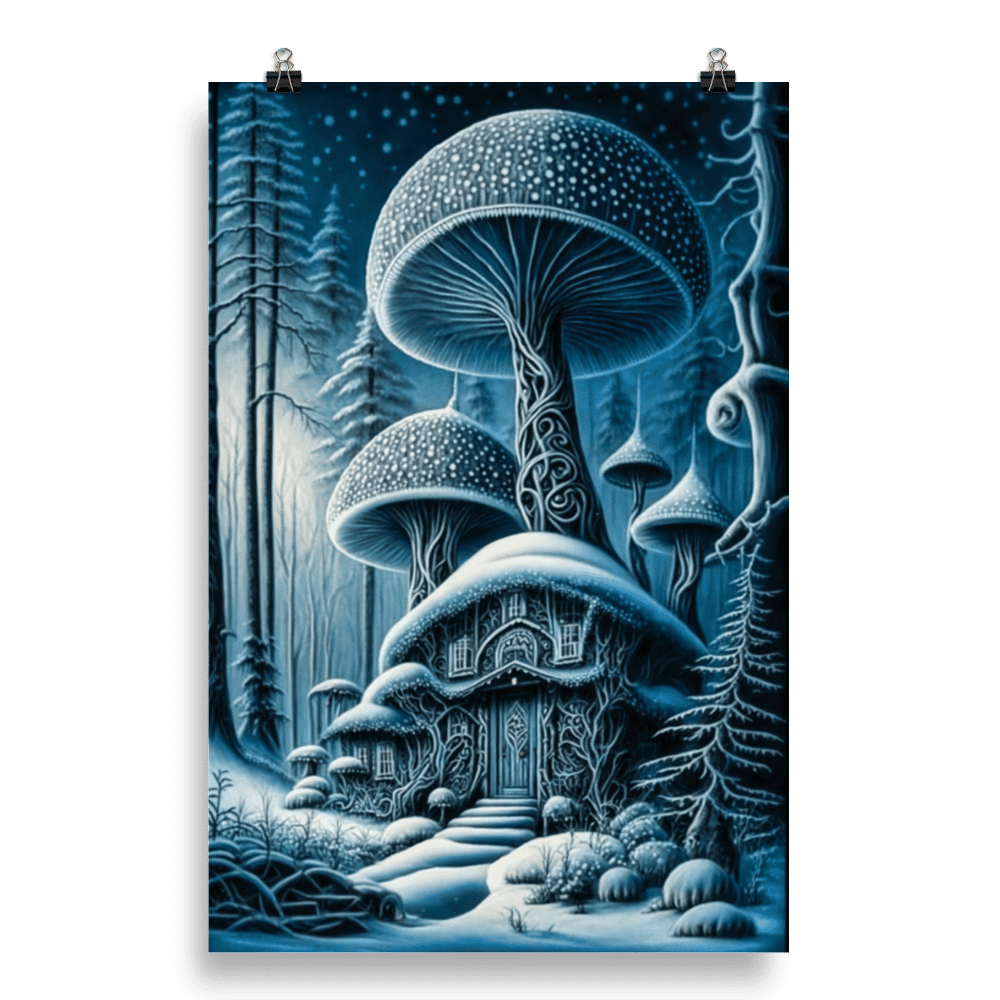The Ultimate Guide to Mushroom Hunting: Tips, Techniques, and Safety
Introduction to Mushroom Foraging

Importance of mushroom hunting as a popular outdoor activity
Importance of mushroom hunting as a popular outdoor activity
Mushroom foraging has gained significant popularity as a popular outdoor activity, attracting nature enthusiasts, foodies, and curious adventurers alike. The thrill of searching for and discovering edible mushrooms in their natural habitat has captivated people around the world. This engaging and rewarding pursuit offers a unique opportunity to connect with nature, learn about fungal diversity, and enjoy the bounty of the forest.
Section 1: The Appeal of Mushroom Hunting
- Nature enthusiasts and adventure seekers are drawn to the excitement and mystery of mushroom foraging.
- Mushroom hunting allows individuals to immerse themselves in nature and explore diverse ecosystems.
- For food lovers, mushroom hunting presents an opportunity to discover delicious and unique culinary ingredients.
- The medicinal properties of certain mushrooms have sparked interest among health-conscious individuals.
- Mushroom hunting offers a chance to engage in a sustainable and eco-friendly activity that supports local ecosystems.
Section 2: Connecting with Nature
- Mushroom foraging provides a valuable opportunity to connect with the natural world and escape from the demands of daily life.
- Exploring forests and other natural habitats allows for a deeper appreciation of biodiversity.
- The thrill of the hunt stimulates curiosity and encourages learning about different mushroom species.
- Observing the various stages of mushroom growth and understanding their ecological roles can be a fascinating educational experience.
Section 3: Culinary Adventures
- Mushroom hunting enthusiasts can discover a wide array of culinary treasures not typically found in grocery stores.
- Locally sourced and freshly foraged mushrooms can enhance the flavors of dishes and provide a unique taste experience.
- Cooking with foraged mushrooms adds an element of adventure and creativity to culinary pursuits.
- Learning to identify edible mushrooms and distinguishing them from potentially toxic species is crucial for a safe and enjoyable gastronomic adventure.
Conclusion: Mushroom hunting, with its blend of excitement, connection to nature, and culinary exploration, has firmly established itself as a thriving outdoor activity. Whether you are a beginner or an experienced forager, the world of mushrooms awaits, promising endless discoveries and unforgettable experiences in the great outdoors. So grab your field guide, put on your boots, and embark on an enriching journey into the captivating world of mushroom foraging.
Benefits of foraging for wild mushrooms
Benefits of foraging for wild mushrooms
Foraging for wild mushrooms offers a myriad of benefits that go beyond the thrill of the hunt. Whether you’re a seasoned forager or a beginner eager to explore nature’s wonders, here are some key advantages of indulging in this rewarding activity.
Section 1: Connection to Nature
- Immerse yourself in the natural world by venturing into forests, meadows, and woodlands.
- Develop a deeper appreciation for the beauty and diversity of the natural environment.
- Engage your senses as you navigate through the landscape, connecting with the sights, sounds, and scents of the outdoors.
- Embrace the opportunity to escape the hustle and bustle of everyday life and find solace in nature’s tranquility.
Section 2: Physical and Mental Well-being
- Foraging for wild mushrooms is a physical activity that encourages movement and exercise.
- Breathe in fresh air and soak up vitamin D from sunlight, boosting your overall well-being.
- Engaging in outdoor activities like mushroom foraging can help reduce stress and promote mental relaxation.
- The act of searching for mushrooms can serve as a meditative practice, fostering mindfulness and a sense of presence.
Section 3: Sustainable and Locally Sourced Food
- Enjoy the nutritional benefits of wild mushrooms, which are often rich in vitamins, minerals, and antioxidants.
- Foraging allows you to source food directly from nature, promoting a sustainable and eco-friendly lifestyle.
- Discover unique flavors and culinary possibilities that wild mushrooms offer, enhancing your gastronomic experiences.
- Support local ecosystems by promoting biodiversity and a balanced ecological system.
Section 4: Cost Savings and Self-Sufficiency
- Foraging for wild mushrooms can provide economic benefits by reducing your grocery bills.
- Develop self-sufficiency by acquiring knowledge and skills to identify edible mushrooms in your region.
- Share your foraged treasures with friends and family, fostering a sense of community and connection.
Conclusion: Foraging for wild mushrooms is a captivating and fulfilling activity that offers numerous benefits. From the profound connection to nature and the physical and mental well-being it promotes to the sustainable and locally sourced food it provides, mushroom foraging is a gateway to a richer, more fulfilling lifestyle. So, embrace the wonders of nature, embark on exciting mushroom hunts, and unlock the bountiful rewards that await in the world of wild mushrooms.
Understanding Mushroom Hunting Basics
What is mushroom hunting?
What is mushroom hunting?
Curious about mushroom hunting? This guide will introduce you to the fundamentals of this captivating outdoor activity. Get ready to embark on an exciting journey as we delve into what mushroom hunting is all about.
Section 1: What is Mushroom Hunting? Mushroom hunting, also known as mushroom foraging or mushrooming, is the process of searching for wild mushrooms in their natural habitats. It involves identifying and collecting various mushroom species for culinary, medicinal, or recreational purposes.
Section 2: The Appeal of Mushroom Hunting Discover the allure of mushroom hunting, including its sense of adventure, the thrill of the hunt, and the opportunity to connect with nature and appreciate fungal diversity.
Section 3: Mushroom Habitat and Seasons Learn about the preferred habitats of different mushroom species, such as forests, meadows, or woodland areas. Understand how mushroom growth is influenced by seasonal variations and the importance of timing your hunts accordingly.
Section 4: Mushroom Identification Develop essential skills in mushroom identification by studying the physical characteristics, such as color, shape, gills, and spore prints. Familiarize yourself with edible mushrooms and differentiate them from potentially toxic species.
Section 5: Essential Tools for Mushroom Hunting Equip yourself with the necessary tools for a successful mushroom hunt, including a field guide, a sturdy basket or bag for collecting mushrooms, a small knife for careful harvesting, and appropriate footwear and clothing.
Section 6: Harvesting Techniques Learn proper harvesting techniques to ensure the sustainability of mushroom populations and habitats. Discover methods for cutting or twisting mushrooms to minimize damage and allow for regrowth.
Section 7: Safety Precautions Prioritize safety during your mushroom hunts by understanding poisonous mushroom awareness, practicing cautious handling techniques, and seeking expert advice when uncertain about a mushroom’s edibility.
Section 8: Ethical Foraging Embrace ethical foraging practices to preserve the delicate balance of ecosystems and maintain mushroom habitats for future generations. Respect private property and follow local regulations and guidelines.
Section 9: Culinary Delights and Medicinal Potential Explore the culinary delights and potential health benefits that wild mushrooms offer. Discover various cooking techniques and recipes to elevate your culinary creations using fresh, foraged mushrooms.
Conclusion: Mushroom hunting is a captivating outdoor pursuit that combines adventure, nature exploration, and the joy of discovering unique fungi. Armed with the knowledge of mushroom hunting basics, you are ready to embark on your own mushroom foraging adventures. So, grab your gear, explore the wilderness, and unlock the treasures hidden beneath the forest canopy. Happy hunting!
Different types of mushrooms and their characteristics
Different types of mushrooms and their characteristics
Mushrooms come in a fascinating array of shapes, sizes, and colors, each with its own distinctive characteristics. In this section, we will delve into the diverse world of mushrooms and explore the unique attributes of various mushroom types.
Section 1: Edible Mushrooms Discover a selection of edible mushrooms that are prized for their culinary value. Learn about popular varieties such as Chanterelles, Morels, Porcini, and Shiitake mushrooms, including their flavors, textures, and cooking applications.
Section 2: Medicinal Mushrooms Uncover the potential health benefits of medicinal mushrooms. Explore mushrooms like Reishi, Lion’s Mane, and Turkey Tail, known for their immune-boosting, antioxidant, and anti-inflammatory properties.
Section 3: Poisonous Mushrooms Become familiar with poisonous mushrooms to ensure your safety during mushroom hunts. Learn about Amanita species, Death Cap, and other toxic mushrooms, including their distinctive characteristics and potential dangers.
Section 4: Psychedelic Mushrooms Explore the world of psychedelic mushrooms, which contain mind-altering compounds like psilocybin. Learn about popular species such as Psilocybe cubensis and Psilocybe semilanceata, and the effects they may induce.
Section 5: Cultivated Mushrooms Discover commonly cultivated mushrooms, including White Button, Cremini, and Portobello mushrooms. Explore their characteristics, growth requirements, and culinary versatility.
Section 6: Unusual and Exotic Mushrooms Unveil the intriguing world of unusual and exotic mushrooms. Encounter visually striking species like Lobster Mushroom, Lactarius indigo, and Cauliflower Mushroom, known for their unique appearances and flavors.
Section 7: Truffle Varieties Delve into the aromatic realm of truffle mushrooms, highly sought-after for their intense flavors. Learn about renowned varieties such as Black Truffle, White Truffle, and Summer Truffle and their culinary significance.
Section 8: Mushroom Variations by Habitat Explore how mushrooms adapt to various habitats and ecological niches. Understand the distinctions between forest mushrooms, grassland mushrooms, and mycorrhizal mushrooms, each thriving in specific environments.
Conclusion: The world of mushrooms is a vast and diverse realm, offering an incredible variety of flavors, textures, and properties. By understanding the characteristics of different mushroom types, you can enrich your culinary experiences, explore potential health benefits, and ensure your safety in the wild. So, delve into the fascinating realm of mushrooms and discover the wonders that await beneath the forest canopy.
Mushroom seasons and ideal hunting times
Mushroom seasons and ideal hunting times
Timing is crucial in mushroom hunting, as different mushroom species have specific seasons when they thrive. In this section, we will uncover the ideal hunting times for various mushrooms, allowing you to plan your foraging adventures with precision.
Section 1: Spring Mushrooms Spring brings a burst of mushroom activity. Look for Morels, Oyster Mushrooms, and St. George’s Mushrooms as they emerge during this season. Take advantage of mild temperatures and moisture for successful spring hunts.
Section 2: Summer Mushrooms While mushroom activity tends to slow down in summer, some varieties can still be found. Keep an eye out for Chanterelles, Chicken of the Woods, and Lobster Mushrooms, which may appear in late summer, especially after rainfall.
Section 3: Fall Mushrooms Fall is considered prime mushroom season, offering a bountiful harvest. Look for sought-after species such as Porcini, Honey Mushrooms, and Lions Mane during this time. Cool temperatures and moist conditions create optimal hunting opportunities.
Section 4: Winter Mushrooms While mushroom activity decreases in winter, a few hardy species can still be found. Keep an eye out for Velvet Foot, Winter Chanterelles, and Wood Ear Mushrooms, which can withstand colder temperatures and may appear in certain regions.
Section 5: Year-round Mushrooms Certain mushroom species can be found throughout the year, regardless of specific seasons. Examples include Oyster Mushrooms (cultivated varieties), Shiitake, and Button Mushrooms, which are available in grocery stores or can be cultivated indoors.
Section 6: Regional Variations It’s important to consider regional variations in mushroom seasons. Factors such as climate, geographical location, and local ecosystems can influence the timing and availability of mushroom species. Consult local resources and experienced foragers for accurate information specific to your area.
Conclusion: Understanding mushroom seasons and ideal hunting times is key to a successful foraging experience. By knowing when specific mushrooms are most likely to emerge, you can plan your hunts accordingly and increase your chances of finding abundant and diverse fungi. So, mark your calendars, be aware of regional variations, and get ready to embark on exciting mushroom hunting expeditions throughout the seasons.
Must-Have Equipment for Mushroom Hunting: Gear up for a Successful Foraging Adventure
Equipping yourself with the right tools and gear is essential for a fruitful and safe mushroom hunting expedition. In this section, we will explore the essential equipment you need to enhance your foraging experience and ensure you’re well-prepared for your mushroom hunts.
Section 1: Field Guide A reliable field guide is a must-have companion for mushroom hunters. Choose a guidebook specific to your region that provides detailed information, vivid photographs, and identification tips for different mushroom species.
Section 2: Basket or Bag Carry a sturdy basket or bag to collect the mushrooms you find. Opt for a container with plenty of ventilation to allow airflow and prevent mushrooms from becoming damp or mushy.
Section 3: Mushroom Knife Invest in a mushroom knife equipped with a sharp blade and a brush. The blade is ideal for precise harvesting, while the brush helps remove dirt and debris without damaging the delicate mushroom caps.
Section 4: Clothing and Footwear Wear comfortable clothing suitable for the weather conditions and the terrain you’ll be exploring. Choose long pants, a long-sleeved shirt, and sturdy waterproof boots to protect yourself from scratches, insect bites, and moisture.
Section 5: Field Notebook and Pen Keep a field notebook and pen handy to record your findings, note down observations, and document important details about the mushrooms you encounter. This information can be valuable for future reference and learning.
Section 6: GPS or Compass In unfamiliar areas, consider carrying a GPS device or a reliable compass to help you navigate and mark specific mushroom locations. This ensures you can find your way back or share precise coordinates with fellow foragers.
Section 7: Bug Spray and Tick Repellent Protect yourself from pesky insects and ticks by applying bug spray or using tick repellent. These products can help minimize discomfort and reduce the risk of insect-borne diseases during your mushroom hunts.
Section 8: First Aid Kit Always have a basic first aid kit on hand in case of minor injuries or accidents. Include items such as band-aids, antiseptic wipes, tweezers, and any necessary medication specific to your needs.
Section 9: Snacks and Water Stay hydrated and energized during your mushroom hunting excursions by carrying a water bottle and packing nutritious snacks. Nuts, energy bars, and fresh fruits are portable options to keep you fueled throughout the day.
Section 10: Safety Precautions Prioritize safety by informing someone about your mushroom hunting plans, familiarizing yourself with poisonous mushroom identification, and adhering to local regulations and guidelines to ensure a safe and enjoyable experience.
Conclusion: Equipping yourself with the essential equipment for mushroom hunting sets the stage for a successful and memorable foraging adventure. From a reliable field guide to proper clothing, gear, and safety precautions, having the right tools ensures you’re prepared to explore nature’s fungal wonders. So, gather your equipment, venture into the wilderness, and embark on exciting mushroom hunting expeditions with confidence.
Identifying Edible and Poisonous Mushrooms:
Key features to look for in edible mushrooms
Key features to look for in edible mushrooms
Distinguishing between edible and poisonous mushrooms is crucial for a safe mushroom hunting experience. In this section, we will explore the key features to look for when identifying edible mushrooms, enabling you to confidently differentiate them from potentially toxic species.
Section 1: Cap Characteristics Examine the cap of the mushroom. Edible mushrooms often have a convex or flat cap with a smooth or slightly textured surface. Look for a cap that is firm, moist, and free from signs of decay or discoloration.
Section 2: Gills and Pores Check the gills or pores underneath the mushroom cap. Edible mushrooms typically have well-spaced gills that are white, cream, pink, or brown in color. Avoid mushrooms with red, yellow, or black gills or any with a foul odor.
Section 3: Stem Characteristics Observe the stem of the mushroom. Edible mushrooms generally have a solid, firm stem that is consistent in color and texture with the cap. Avoid mushrooms with hollow stems, brittle or spongy texture, or ones that exhibit significant color variations.
Section 4: Spore Color Take note of the spore color of the mushroom. Edible mushrooms often produce white, cream, yellow, or brown spores. Use a piece of white paper or a spore print kit to collect and observe the spores.
Section 5: Veil or Ring Look for the presence of a veil or ring on the mushroom. Some edible mushrooms have a partial veil that covers the gills when young or leave a ring-like structure on the stem. This feature can help differentiate them from poisonous varieties.
Section 6: Habitat and Growth Pattern Consider the habitat and growth pattern of the mushroom. Edible mushrooms often have specific associations with certain trees, plants, or soil types. Research the preferred habitat of the mushroom species you’re targeting for a better chance of finding edible varieties.
Section 7: Odor and Taste Pay attention to the odor and taste of the mushroom, but exercise caution when using these characteristics as the sole means of identification. Edible mushrooms may have a pleasant, earthy aroma and a mild, savory taste, while toxic mushrooms often have a strong or unpleasant odor.
Section 8: Expert Consultation When in doubt, seek expert consultation from experienced mushroom foragers, mycologists, or local mushroom clubs. They can provide guidance, help with identification, and offer valuable insights to ensure your safety when identifying edible mushrooms.
Conclusion: Identifying edible mushrooms requires careful observation and knowledge of key features. By examining characteristics such as cap shape, gill color, stem structure, spore color, veil or ring presence, habitat, and odor, you can confidently distinguish edible varieties from potentially poisonous ones. Remember to double-check your identifications and consult experts when uncertain. With practice and proper caution, you’ll be on your way to safely enjoying the culinary delights of foraged mushrooms.
Recognizing Common Poisonous Mushrooms: Distinguishing Traits for Safe Identification
Understanding the distinguishing traits of common poisonous mushrooms is essential for avoiding potential health risks during mushroom foraging. In this section, we will explore some key features that can help you recognize and steer clear of toxic mushroom species.
Section 1: Amanita Species Amanita mushrooms are among the most notorious poisonous varieties. Look for the following distinguishing traits:
- White spore print: Amanita species typically produce a white spore print.
- Volva: Many Amanita mushrooms have a volva, a cup-like or sac-like structure at the base of the stem.
- Ring: Look for a persistent ring or remnants of a ring on the stem.
- Distinctive cap: Pay attention to unique features like warty patches, veils, or bright colors on the cap.
Section 2: Death Cap (Amanita phalloides) The Death Cap mushroom is particularly dangerous. Recognize its characteristics:
- Greenish or yellowish cap: The cap of the Death Cap can be greenish, yellowish, or even olive in color.
- White gills: The gills of the Death Cap are typically white.
- Volva: Look for a prominent cup-like volva at the base of the stem.
- Ring: The Death Cap may have a remnant of a ring on the upper part of the stem.
Section 3: Destroying Angel (Amanita bisporigera) The Destroying Angel mushroom is highly toxic. Identify its distinguishing traits:
- White cap and gills: The cap and gills of the Destroying Angel are pure white.
- Volva: Look for a sac-like volva at the base of the stem.
- Ring: The Destroying Angel may have a remnant of a ring on the upper part of the stem.
- Lack of distinctive odor: Note that the Destroying Angel often lacks a noticeable odor.
Section 4: False Morels (Gyromitra species) False Morels are hazardous mushrooms that resemble true Morels. Spot their defining characteristics:
- Brain-like appearance: False Morels have a distinctive brain-like or convoluted cap surface.
- Not hollow: Unlike true Morels, False Morels are not hollow but contain cottony or cotton-like material.
- Toxic compounds: False Morels contain toxic compounds that can lead to severe health issues if ingested.
Section 5: Other Poisonous Varieties Several other mushrooms pose a risk to human health. Be cautious of:
- Galerina marginata: This small mushroom features a brown to rusty brown cap and brown gills. It can be mistaken for edible mushrooms but contains deadly toxins.
- Gyromitra esculenta: This false Morel species has a lobed, brain-like cap and is known to contain potentially harmful compounds.
- Cortinarius species: Many species of Cortinarius mushrooms are toxic and can be identified by their rusty brown spore prints and cortina (a cobweb-like veil) present on young caps.
Conclusion: Recognizing the distinguishing traits of common poisonous mushrooms is crucial for avoiding accidental ingestion and potential harm. Familiarize yourself with the distinguishing features of toxic species like Amanita mushrooms, False Morels, Galerina marginata, Gyromitra esculenta, and certain Cortinarius species. Always prioritize safety and consult with experts or local mycological societies for accurate identification to ensure a safe and enjoyable mushroom foraging experience.
Mastering Mushroom Identification: A Guide to Utilizing Field Guides and Online Resources
Accurate identification is crucial when foraging for mushrooms. To enhance your identification skills, this section provides a comprehensive guide on effectively utilizing field guides and online resources to identify mushrooms with confidence.
Section 1: Field Guides Field guides are invaluable resources for on-the-spot identification during your mushroom hunts. Follow these steps to make the most of your field guide:
- Choose a Regional Guide: Select a field guide specific to your geographical region. This ensures the information is tailored to the mushroom species found in your area.
- Study the Guide: Familiarize yourself with the guide’s organization and layout. Understand how mushrooms are categorized and how to navigate through the book efficiently.
- Observe Key Features: Pay attention to the key features highlighted in the guide, such as cap shape, gill color, stem characteristics, and spore color. Compare these features to the mushrooms you encounter.
- Compare Photographs: Compare the photographs in the guide with the mushrooms you’ve found. Look for similarities in shape, color, texture, and other identifying characteristics.
- Read Descriptions: Read the descriptive information provided for each mushroom species. Note specific details, such as habitat preferences, seasonality, and any toxic look-alikes mentioned.
- Practice with Known Species: Begin your identification practice with mushrooms you can confidently identify. Use the field guide to reinforce your knowledge and hone your skills.
Section 2: Online Resources Online resources offer a wealth of information and can complement field guides. Consider the following tips when utilizing online resources for mushroom identification:
- Reputable Websites: Rely on reputable websites, such as those from mycological societies, universities, and government agencies. These sources often provide accurate and up-to-date information.
- Multiple Sources: Cross-reference information from multiple online sources to ensure consistency and accuracy. Compare descriptions, photographs, and identification tips from different websites.
- Online Identification Tools: Utilize online identification tools, such as interactive keys or mushroom identification forums. These resources can guide you through a series of questions to narrow down potential matches for your mushroom.
- User-Generated Content: Engage with online communities and forums where experienced foragers and mycologists share their knowledge. Seek guidance, upload photographs, and ask for help with identification when needed.
- Exercise Caution: Be cautious when using online resources for identification. Double-check the credibility of the source, verify information from multiple reliable sources, and never solely rely on online information for consuming mushrooms.
Conclusion: Mastering mushroom identification involves utilizing both field guides and online resources effectively. By selecting a regional field guide, studying key features, comparing photographs, and reading descriptions, you can enhance your identification skills in the field. Additionally, leveraging reputable online resources, engaging with communities, and utilizing online identification tools can further support your learning journey. Remember, accuracy is crucial, so always cross-reference information and consult experts when in doubt. With practice and a thorough understanding of identification resources, you’ll become more adept at identifying mushrooms and enjoying the rewarding experience of foraging safely.
Top Mushroom Hunting Techniques
Locating prime mushroom habitats (forests, meadows, etc.)
Locating prime mushroom habitats (forests, meadows, etc.)
Locating prime mushroom habitats is a fundamental skill for successful mushroom hunting. In this section, we will explore top techniques for finding optimal mushroom habitats, including forests, meadows, and other key environments where mushrooms thrive.
Section 1: Forest Exploration Forests are renowned mushroom havens. Follow these techniques to locate prime mushroom habitats within forests:
- Diverse Tree Species: Look for forests with diverse tree species. Different mushrooms have specific associations with certain trees. Explore areas with a variety of tree types such as oak, beech, pine, or birch.
- Moisture and Shade: Focus on moist and shaded areas within the forest. Mushrooms thrive in damp environments, so pay attention to areas with decomposing logs, fallen leaves, and moist soil.
- Older Forests: Explore older forests that have had time to establish a rich fungal ecosystem. These forests often harbor a greater diversity of mushroom species.
- Edge Environments: Investigate the edges where different habitats meet, such as forest edges adjacent to meadows or clearings. These transitional zones can provide unique mushroom hunting opportunities.
Section 2: Meadow and Grassland Excursions Meadows and grasslands also offer great potential for mushroom hunting. Consider these techniques for locating prime mushroom habitats in these environments:
- Grassy Areas: Focus on grassy areas within meadows and grasslands. Look for mushrooms growing in the grass or at the base of plants.
- Fertilized or Disturbed Soil: Pay attention to areas with fertilized or disturbed soil, such as livestock pastures or cultivated fields. These environments can attract certain mushroom species.
- Moisture Availability: Mushrooms in meadows often prefer moist conditions. Explore areas near water sources, such as streams, ponds, or marshes.
- Early Morning Exploration: Mushrooms in meadows tend to emerge early in the day. Embark on your mushroom hunt during the early morning hours to increase your chances of finding freshly sprouted mushrooms.
Section 3: Other Key Environments Expand your search beyond forests and meadows by considering these additional environments:
- Deciduous Woodlands: Explore deciduous woodlands characterized by trees that shed their leaves seasonally. These habitats offer unique mushroom diversity.
- Coniferous Forests: Venture into coniferous forests dominated by evergreen trees like pines, spruces, or firs. Some mushroom species are specifically associated with conifers.
- Wetlands and Swamps: Investigate wetlands and swamps, which can support a wide range of mushroom species. Look for mushrooms in areas with standing water or near moisture-loving vegetation.
Conclusion: Mastering the art of locating prime mushroom habitats is key to a successful foraging experience. Whether exploring forests, meadows, or other environments, remember to focus on factors such as diverse tree species, moisture availability, shade, and edge environments. By honing your skills in identifying optimal mushroom habitats, you’ll increase your chances of discovering bountiful mushroom treasures during your hunts.
Observing environmental cues and signs of mushroom presence
Observing environmental cues and signs of mushroom presence
Observing environmental cues and signs of mushroom presence is a valuable skill for successful mushroom hunting. In this section, we will explore key environmental cues and indicators that can help you identify areas where mushrooms are likely to be found.
Section 1: Moisture and Rainfall Mushrooms thrive in moist environments. Consider the following cues related to moisture and rainfall:
- Recent Rainfall: Look for areas that have received recent rainfall. Mushrooms often emerge shortly after rainfall, so hunting after a good shower can increase your chances of finding fresh specimens.
- Water Accumulation: Observe the presence of water accumulation or areas with persistent moisture. Mushrooms tend to grow in damp spots, such as near streams, in low-lying areas, or around fallen logs where moisture is retained.
- Muddy Ground: Pay attention to muddy or wet ground. Mushrooms often flourish in these conditions, so areas with muddy patches or soggy soil can be promising for mushroom hunting.
Section 2: Leaf Litter and Decomposing Matter Mushrooms play a vital role in the decomposition process. Consider the following cues related to leaf litter and decomposing matter:
- Leaf Litter: Scan areas with abundant leaf litter. Decomposing leaves provide nutrients for mushrooms, so inspect the forest floor, especially under deciduous trees, for potential mushroom finds.
- Rotting Logs and Stumps: Examine rotting logs and tree stumps. Mushrooms have a symbiotic relationship with decaying wood, so check for fungal growth on fallen logs or the base of standing dead trees.
- Fungi Presence: Keep an eye out for other visible signs of fungi, such as mushroom caps, mushroom remnants, or mycelial growth. These indications suggest the presence of mushrooms in the area.
Section 3: Habitat and Ecosystem Factors Understanding the preferred habitats and ecosystem factors can guide your search for mushrooms. Consider the following cues:
- Tree Associations: Note the tree associations in the area. Different mushroom species have specific associations with certain trees. Look for mushrooms near oak, beech, birch, pine, or other tree species known to host mushrooms.
- Ecological Zones: Explore different ecological zones within your region. Certain mushroom species may favor specific habitats like forests, meadows, wetlands, or grasslands. Tailor your search accordingly.
- Microclimates: Identify microclimates within the larger environment. These can include shady spots, areas with consistent moisture, or sheltered pockets. Microclimates often support distinct mushroom populations.
Conclusion: By honing your observation skills and paying attention to environmental cues, you can increase your success in finding mushrooms. Keep an eye out for signs of recent rainfall, areas with moisture accumulation, leaf litter, rotting logs, and other fungi presence. Additionally, understanding tree associations, exploring different ecological zones, and identifying microclimates can guide your search for specific mushroom species. Embrace the art of observation, as it will enhance your ability to locate mushrooms and make your foraging adventures even more rewarding.
Proper mushroom harvesting techniques
Proper mushroom harvesting techniques
Proper mushroom harvesting techniques are essential to ensure the sustainability of mushroom populations and to promote future growth. In this section, we will explore the best practices for harvesting mushrooms in a responsible and sustainable manner.
Section 1: Harvesting Basics Follow these fundamental techniques when harvesting mushrooms:
- Selective Harvesting: Adopt a selective harvesting approach by choosing mature, fully developed mushrooms. Leave behind small or immature specimens to allow them to mature and disperse spores for future generations.
- Hand Picking: Use your hands or a sharp knife to carefully pluck or cut mushrooms at the base of the stem. Avoid pulling or uprooting the entire mushroom, as this can damage the mycelium and affect future growth.
- Leave No Trace: Practice leave-no-trace principles by minimizing any impact on the environment. Avoid trampling surrounding vegetation, and be mindful of the delicate ecosystems where mushrooms grow.
Section 2: Spore Dispersal Promote the dispersal of mushroom spores for ecosystem health and regeneration:
- Spore Prints: Collect spore prints by placing mushroom caps on paper or foil overnight. Spore prints can help with identification and provide an opportunity to harvest mushrooms while still allowing spore dispersal in their natural habitat.
- Scatter Spores: After obtaining spore prints, scatter the spores in suitable habitats away from where you harvested the mushrooms. This helps to disperse the spores and contribute to the natural reproduction cycle.
Section 3: Safety Precautions Ensure your safety and the safety of others while harvesting mushrooms:
- Proper Identification: Always accurately identify mushrooms before harvesting. Mistakenly consuming toxic mushrooms can have severe health consequences. When in doubt, consult with experts or experienced foragers.
- Know Your Harvesting Area: Be aware of any specific regulations, protected areas, or restrictions regarding mushroom harvesting in your region. Respect private property rights and obtain necessary permissions when foraging.
- Protective Gear: Wear appropriate protective gear, such as gloves and a mushroom knife, to avoid any potential skin irritation or injury while handling mushrooms.
Conclusion: By following proper mushroom harvesting techniques, you contribute to the sustainability of mushroom populations and protect the ecosystems they inhabit. Practice selective harvesting, hand picking, and leave-no-trace principles to minimize your impact on the environment. Additionally, promote spore dispersal through spore prints and scattering techniques. Prioritize safety by accurately identifying mushrooms, understanding local regulations, and using protective gear. Remember, responsible harvesting ensures the preservation of mushrooms for future generations of foragers to enjoy.
Strategies for maximizing mushroom yield
Strategies for maximizing mushroom yield
Maximizing mushroom yield is a goal for every avid forager. By employing effective strategies, you can increase your chances of encountering a bountiful harvest. In this section, we will explore key strategies for maximizing your mushroom yield and enjoying a successful foraging experience.
Section 1: Timing and Season Understanding the timing and seasonality of mushroom growth is crucial. Consider the following strategies:
- Research Seasonal Patterns: Study the seasonal patterns of the mushrooms you are targeting. Different species have specific times of the year when they flourish. Knowing the optimal season increases your chances of finding abundant mushrooms.
- Early Morning Excursions: Venture out during the early morning hours when temperatures are cooler and moisture from the night is still present. Mushrooms are more likely to be fresh and undisturbed, maximizing your yield.
- Check Weather Conditions: Keep an eye on weather conditions before your foraging trip. Moisture and temperature play vital roles in mushroom growth. Plan your outings after rainfall or in conditions conducive to mushroom flourishing.
Section 2: Variety and Habitat Exploration Exploring a variety of habitats and expanding your mushroom knowledge can lead to increased yield. Consider these strategies:
- Diversify Your Hunting Grounds: Explore a range of habitats, including different forests, meadows, grasslands, and wetlands. Each environment hosts unique mushroom species, increasing your chances of finding a variety of mushrooms.
- Target Key Mushroom Species: Familiarize yourself with key mushroom species known for their abundance and culinary value in your region. Prioritize hunting for these species during their peak season to maximize your yield.
- Learn Mushroom Associations: Study the associations between mushrooms and their preferred habitat or host trees. Understanding these relationships helps you locate specific mushrooms in their preferred environments.
Section 3: Continuous Learning and Observation Constant learning and keen observation are essential for maximizing your mushroom yield. Consider these strategies:
- Educate Yourself: Continuously expand your knowledge of mushrooms through books, field guides, online resources, and expert advice. Learn about different mushroom species, their growth habits, and identification features.
- Practice and Refine Identification Skills: Hone your identification skills by regularly practicing in the field. The more familiar you become with various mushroom species, the better equipped you’ll be to identify and harvest them.
- Observe Fungal Cues: Sharpen your observation skills to identify environmental cues that indicate mushroom presence. Look for signs of mycelium, fungal activity, or other indicators that suggest mushrooms may be nearby.
Conclusion: By implementing these strategies, you can maximize your mushroom yield and enhance your foraging experiences. Timing your trips, diversifying your hunting grounds, targeting specific mushroom species, and continuously learning and observing will greatly increase your chances of encountering abundant mushroom harvests. Embrace the adventure, stay curious, and enjoy the rewards of a fruitful foraging journey.
Safety Measures for Mushroom Hunting
Important safety precautions and considerations
Important safety precautions and considerations
Introduction: While mushroom hunting can be an exciting and rewarding activity, it’s important to prioritize safety during your foraging adventures. This section will outline crucial safety measures and precautions to ensure a safe and enjoyable mushroom hunting experience.
Section 1: Proper Mushroom Identification Accurate identification is paramount for your safety. Consider the following measures:
- Consult Reliable Sources: Utilize trustworthy field guides, online resources, or seek guidance from experienced foragers to assist in accurate mushroom identification. Take note of key features, growth patterns, and potential look-alike species.
- Avoid Unknown Species: Refrain from consuming or handling mushrooms that you cannot confidently identify. Consuming toxic mushrooms can have severe health consequences.
- Start with Familiar Species: Begin your mushroom hunting journey by focusing on well-known, easily identifiable species. As your knowledge and confidence grow, you can gradually explore new species under expert guidance.
Section 2: Safety Precautions Take necessary safety precautions to protect yourself during your mushroom hunting expeditions:
- Protective Gear: Wear appropriate attire, including long pants, long sleeves, sturdy footwear, and gloves. These provide protection against potential hazards like poisonous plants, insects, or sharp objects.
- Stay Hydrated: Carry an adequate supply of water to stay hydrated throughout your foraging trip, especially in warmer weather or during extended excursions.
- Use Insect Repellent: Apply insect repellent to protect yourself from ticks, mosquitoes, or other biting insects that may be present in mushroom habitats.
- Be Mindful of Wildlife: Stay aware of your surroundings and respect wildlife. Avoid disturbing or damaging their habitats and maintain a safe distance from potentially dangerous animals.
Section 3: Environmental Considerations Show respect for the environment and practice responsible foraging:
- Leave-No-Trace: Practice leave-no-trace principles by minimizing your impact on the environment. Avoid damaging vegetation, disturb soil as little as possible, and pack out any trash or debris.
- Adhere to Local Regulations: Research and adhere to any local regulations, protected areas, or restrictions regarding mushroom hunting. Obtain necessary permits or permissions when required.
- Harvest Responsibly: Follow sustainable harvesting techniques mentioned earlier to preserve mushroom populations and their ecosystems for future generations.
Section 4: Group Safety When hunting in a group, additional safety considerations come into play:
- Communication: Maintain clear communication with your group members throughout the hunt. Establish meeting points, share findings, and be aware of each other’s locations.
- Buddy System: Consider using the buddy system, where each member of the group pairs up for added safety and support. Look out for one another and stay within sight or earshot of your buddy.
- Emergency Preparedness: Carry a first aid kit and have a basic understanding of first aid procedures. Additionally, ensure you have a reliable means of communication in case of emergencies, such as a charged mobile phone.
Conclusion: By prioritizing safety measures and precautions, you can enjoy mushroom hunting while minimizing risks and ensuring a safe experience. Focus on proper mushroom identification, wear protective gear, stay hydrated, and be mindful of the environment and wildlife. Adhere to local regulations, practice responsible harvesting, and consider group safety when hunting with others. Remember, safety should always be at the forefront of your mushroom hunting endeavors.
Tips for avoiding toxic or dangerous mushrooms
Tips for avoiding toxic or dangerous mushrooms
Introduction: When it comes to mushroom hunting, the importance of avoiding toxic or dangerous mushrooms cannot be overstated. This section provides valuable tips and strategies to help you steer clear of harmful mushrooms and prioritize your safety during foraging expeditions.
Section 1: Education and Knowledge Equip yourself with the necessary knowledge to identify and avoid toxic mushrooms:
- Educate Yourself: Invest time in mushroom identification education through books, field guides, workshops, or online resources. Familiarize yourself with the characteristics and distinguishing features of both edible and poisonous mushrooms.
- Learn Look-Alikes: Pay special attention to mushrooms that resemble known poisonous species. Understand the key differences between similar-looking mushrooms to avoid misidentification.
- Consult Experts: Seek guidance from experienced foragers, mycologists, or mushroom clubs to enhance your understanding of toxic mushrooms in your region. They can provide invaluable insights and help you differentiate between safe and dangerous species.
Section 2: Visual Inspection and Key Features Adopt a vigilant approach when examining mushrooms in the field:
- Observe Key Features: Focus on identifying features such as cap color, shape, stem characteristics, gill patterns, and the presence of distinctive markings or odors. Pay attention to any warning signs that suggest toxicity.
- Avoid Suspicious Characteristics: Steer clear of mushrooms with red flags, such as brightly colored caps, gills that change color, or mushrooms with an unpleasant or pungent smell. Unusual or uncommon features may indicate potential toxicity.
- Be Cautious of Universal Toxic Species: Familiarize yourself with universal toxic mushrooms, such as the Death Cap (Amanita phalloides) or the Destroying Angel (Amanita virosa). These highly poisonous species are found in many regions and should be avoided at all costs.
Section 3: Doubt and Double-Check When unsure about a mushroom’s safety, err on the side of caution:
- When in Doubt, Leave it Out: If you have even the slightest doubt about a mushroom’s edibility or safety, do not consume it. It’s better to pass up on a potential edible than risk consuming a toxic mushroom.
- Multiple Sources of Confirmation: Before consuming any mushroom, cross-reference your identification using multiple reliable sources or consult with experienced foragers or mycologists. Confirming the identification from different sources adds an extra layer of certainty.
- Start with Easily Identifiable Species: Begin your foraging journey by focusing on well-known, easily identifiable edible mushrooms. As your knowledge and confidence grow, you can gradually explore new species under expert guidance.
Conclusion: Avoiding toxic or dangerous mushrooms is essential for your safety during mushroom hunting. Educate yourself on mushroom identification, learn to differentiate look-alike species, and consult experts for guidance. Observe key features and be cautious of suspicious characteristics. When in doubt, always err on the side of caution and seek confirmation from multiple reliable sources. Remember, prioritizing your safety is the key to enjoying a rewarding and risk-free foraging experience.
Dealing with potential allergenic reactions
Dealing with potential allergenic reactions
While mushroom foraging is an exciting adventure, it’s important to be aware of potential allergenic reactions that some individuals may experience. This section provides valuable tips and strategies to help you deal with potential allergies and sensitivities during your mushroom foraging journeys.
Section 1: Know Your Allergies Understanding your personal allergies and sensitivities is crucial for a safe foraging experience:
- Self-Assessment: Conduct a self-assessment to identify any known food allergies or sensitivities you may have. If you are allergic to certain fungi or have a history of allergic reactions, exercise extra caution when foraging.
- Consult a Healthcare Professional: If you are unsure about your allergies or have concerns, consult a healthcare professional or allergist for advice. They can provide specific guidance tailored to your individual needs.
- Start with Small Quantities: If you are trying a new mushroom species for the first time, start with a small portion to test your tolerance before consuming larger amounts. This allows you to monitor any potential allergic reactions.
Section 2: Proper Handling and Preparation Take precautionary measures when handling and preparing mushrooms:
- Wear Gloves: When handling mushrooms, especially if you have known sensitivities or allergies, consider wearing disposable gloves to minimize direct contact with the mushrooms and reduce the risk of allergic reactions.
- Cook Thoroughly: Cooking mushrooms thoroughly can help neutralize allergenic compounds and reduce the risk of allergic reactions. Avoid consuming raw or undercooked mushrooms if you have allergies or sensitivities.
- Test New Species Gradually: If you are trying a new mushroom species for the first time, introduce it gradually into your diet. Start with a small portion and monitor your body’s reaction before consuming larger quantities.
Section 3: Emergency Preparedness Be prepared for potential allergic reactions during your foraging adventures:
- Carry an Allergy Kit: If you have a known mushroom allergy or sensitivity, consider carrying a personal allergy kit with you. Include antihistamines, an epinephrine auto-injector (if prescribed), and any other medications recommended by your healthcare professional.
- Inform Others: If you are foraging with a group or sharing your harvested mushrooms with others, inform them about any known allergies or sensitivities. This helps others take necessary precautions and make informed decisions.
- Know the Signs of Allergic Reactions: Educate yourself and your foraging companions about the signs and symptoms of allergic reactions. Be vigilant and seek immediate medical attention if you or someone else experiences severe symptoms such as difficulty breathing, swelling, or anaphylaxis.
Conclusion: Dealing with potential allergenic reactions is an important aspect of mushroom foraging. Know your allergies, consult healthcare professionals if needed, and start with small quantities when trying new mushroom species. Handle and cook mushrooms properly to reduce the risk of allergic reactions. Carry an allergy kit and inform others about your allergies. Stay vigilant for signs of allergic reactions and seek immediate medical attention if necessary. By taking these precautions, you can enjoy mushroom foraging while minimizing the risks associated with allergies and sensitivities.
Conservation and Responsible Foraging Practices: Protecting the Environment while Enjoying Mushroom Hunting
Responsible foraging practices are essential to protect the environment and ensure the sustainability of mushroom populations. This section highlights the importance of environmental conservation and provides tips and strategies for practicing responsible foraging during your mushroom hunting expeditions.
Section 1: Leave-No-Trace Principles Adopting leave-no-trace principles helps minimize your impact on the environment:
- Respect Ecosystems: Recognize that mushrooms play a vital role in their respective ecosystems. Avoid damaging vegetation, trampling delicate habitats, or disturbing wildlife during your foraging trips.
- Minimize Soil Disturbance: Be mindful of the soil beneath your feet. Minimize soil disturbance by walking on established paths or durable surfaces. Refrain from digging excessively or leaving behind deep holes.
- Pack Out Your Waste: Leave the foraging area as you found it, or even better. Dispose of any waste, such as food wrappers or plastic bags, in appropriate containers. Consider picking up any litter you come across.
Section 2: Sustainable Harvesting Practices Harvest mushrooms in a sustainable manner to support their long-term survival:
- Take Only What You Need: Harvest mushrooms in moderation. Only collect the amount you will consume or share with others. Avoid overharvesting to allow mushrooms to propagate and contribute to the ecosystem.
- Respect Mycelium Networks: Remember that mushrooms are the reproductive structures of mycelium networks underground. Avoid disturbing or damaging mycelium by gently harvesting mushrooms without uprooting or damaging the surrounding area.
- Selective Harvesting: Consider practicing selective harvesting techniques by choosing mature mushrooms while leaving younger or smaller ones behind. This allows the mushrooms to release spores and contributes to their overall population health.
Section 3: Habitat Preservation Promote habitat preservation for mushrooms and other organisms:
- Know Protected Areas: Research and familiarize yourself with any protected areas or regions where mushroom hunting is restricted or prohibited. Respect these designations and adhere to the rules and regulations in place.
- Avoid Endangered Species: Be aware of endangered or rare mushroom species in your region. Avoid collecting them to prevent further decline in their populations. Celebrate their presence and protect their habitats.
- Share Knowledge and Passion: Educate others about the importance of environmental conservation and responsible foraging practices. Share your knowledge and passion for mushrooms to inspire others to treat nature with respect.
Conclusion: Environmental conservation and responsible foraging practices go hand in hand during mushroom hunting. Embrace leave-no-trace principles to minimize your impact on the environment. Practice sustainable harvesting techniques, respect mycelium networks, and be selective in your mushroom collection. Support habitat preservation efforts and respect protected areas. By promoting these responsible practices and sharing your knowledge, you contribute to the preservation and sustainability of mushroom populations and the ecosystems they inhabit.
Preserving and Cooking Wild Mushrooms
Tips for Cleaning, Storing, and Enhancing their Flavor
Preserving and cooking wild mushrooms is an exciting part of the mushroom hunting experience. This section provides valuable tips and techniques for cleaning and storing mushrooms to maintain their freshness, as well as enhancing their flavor through various cooking methods.
Section 1: Cleaning Mushrooms Properly cleaning mushrooms ensures their quality and removes any debris:
- Gentle Brushing: Use a soft-bristled brush or a mushroom-specific brush to gently remove dirt, debris, and any loose soil from the mushroom’s surface. Avoid washing mushrooms unless absolutely necessary.
- Damp Cloth or Paper Towel: For mushrooms that require a bit more cleaning, lightly dampen a cloth or paper towel and wipe away any impurities. This method helps preserve their natural texture and flavor.
- Trimming and Inspecting: Trim off any discolored or damaged parts of the mushroom. Inspect closely for signs of pests or decay. Discard any mushrooms that show signs of spoilage.
Section 2: Storing Mushrooms Proper storage ensures that mushrooms stay fresh and maintain their quality:
- Refrigeration: Store fresh mushrooms in a paper bag or a breathable container in the refrigerator. Avoid storing them in airtight plastic bags, as they can trap moisture and lead to faster spoilage.
- Moisture Control: Place a slightly damp paper towel in the storage container to maintain the mushrooms’ moisture balance. Check the towel periodically and replace it if it becomes too wet or dry.
- Consume Promptly: Wild mushrooms are best consumed as soon as possible for optimal flavor and texture. However, if you need to store them for a longer period, aim for no more than a few days to maintain their freshness.
Section 3: Enhancing Flavor through Cooking Explore various cooking techniques to bring out the best in your wild mushrooms:
- Sautéing: Sauté mushrooms in a hot skillet with a bit of butter or oil until they are golden brown and fragrant. This method intensifies their flavors and creates a delightful caramelization.
- Roasting: Roasting mushrooms in the oven with a drizzle of olive oil, herbs, and seasonings adds depth and richness to their taste. The high heat concentrates their flavors and brings out their natural umami.
- Grilling: Grilling mushrooms imparts a smoky and earthy flavor. Brush them with marinades or dressings to enhance their taste further. Use a grilling basket or skewers to prevent smaller mushrooms from falling through the grill grates.
Conclusion: Preserving and cooking wild mushrooms allows you to savor their unique flavors. Remember to gently clean mushrooms using a brush or damp cloth, removing any debris. Store them in a breathable container in the refrigerator, and consume them promptly for the best quality. Explore various cooking techniques like sautéing, roasting, and grilling to enhance their flavor and create delightful culinary experiences. By employing these tips, you can enjoy the full potential of your freshly foraged wild mushrooms.
Drying, Freezing, and Pickling Methods for Long-Term Enjoyment
Preserving wild mushrooms through drying, freezing, and pickling allows you to extend their shelf life and enjoy their flavors throughout the year. In this section, we explore various preservation techniques and provide tips and methods for drying, freezing, and pickling wild mushrooms.
Section 1: Drying Mushrooms Drying mushrooms is an effective way to preserve them for long-term storage:
- Clean and Trim: Start by cleaning and trimming the mushrooms as mentioned in the previous section.
- Air Drying: Arrange the mushrooms in a single layer on a drying rack or a mesh screen. Place them in a well-ventilated area away from direct sunlight. Allow the mushrooms to air dry until they become brittle and cracker-like.
- Oven Drying: Alternatively, you can use an oven set to a low temperature (around 120°F or 50°C) to dry the mushrooms. Spread them on a baking sheet lined with parchment paper and place them in the oven for several hours until they are thoroughly dried.
- Storage: Once the mushrooms are fully dried, store them in an airtight container or a vacuum-sealed bag. Keep them in a cool, dark place to maintain their flavor and quality.
Section 2: Freezing Mushrooms Freezing mushrooms is another convenient method to preserve their freshness:
- Blanching: Start by blanching the mushrooms to help preserve their texture. Bring a pot of water to a boil and submerge the mushrooms for a brief moment (around 1-2 minutes). Then, transfer them to an ice bath to cool quickly.
- Slicing or Chopping: Slice or chop the mushrooms according to your preference. Consider how you will use them in future recipes.
- Flash Freezing: Arrange the sliced or chopped mushrooms in a single layer on a baking sheet and place them in the freezer. Allow them to freeze for a couple of hours until they are solid.
- Storage: Transfer the frozen mushrooms to freezer-safe containers or resealable freezer bags. Label the containers with the date and type of mushrooms. Use them within a few months for the best quality.
Section 3: Pickling Mushrooms Pickling mushrooms adds a tangy and flavorful twist to their taste:
- Preparation: Clean the mushrooms and trim them as described earlier. You can choose to leave them whole or slice them, depending on your preference.
- Brine Solution: Prepare a brine solution by combining vinegar, water, salt, and desired spices in a saucepan. Bring the mixture to a boil and simmer for a few minutes to infuse the flavors.
- Pickling Process: Submerge the mushrooms in the hot brine solution. Let them soak for a few minutes or until they are tender but still slightly firm.
- Jarring: Transfer the pickled mushrooms along with the brine into sterilized glass jars. Ensure the mushrooms are fully covered by the brine. Seal the jars tightly and refrigerate them for at least a week before consuming for optimal flavor.
Conclusion: Preserving wild mushrooms through drying, freezing, and pickling methods allows you to enjoy their flavors even when they are out of season. Air drying or oven drying mushrooms provides long-term storage options. Freezing mushrooms after blanching and flash freezing helps maintain their texture. Pickling mushrooms in a tangy brine solution adds a delightful twist to their taste. With these preservation techniques at your disposal, you can savor the unique flavors of wild mushrooms throughout the year.
Popular mushroom recipes and cooking ideas
Popular mushroom recipes and cooking ideas
Exploring a variety of mushroom recipes and cooking ideas is a fantastic way to showcase the flavors and versatility of these fascinating fungi. In this section, we present a collection of popular mushroom recipes and creative cooking ideas to inspire your culinary adventures.
Section 1: Mushroom Risotto Indulge in the creamy and comforting goodness of mushroom risotto:
- Ingredients: Arborio rice, mushrooms (such as cremini, shiitake, or porcini), onion, garlic, vegetable broth, white wine, Parmesan cheese, butter, fresh herbs (thyme or parsley), salt, and pepper.
- Method: Sauté the mushrooms with onions and garlic, then add the Arborio rice and cook until translucent. Gradually add vegetable broth and white wine while stirring continuously until the rice is cooked and creamy. Finish with Parmesan cheese, butter, fresh herbs, salt, and pepper.
Section 2: Stuffed Mushrooms Create delectable bite-sized treats with stuffed mushrooms:
- Ingredients: Large mushroom caps (such as portobello or white button mushrooms), filling options (e.g., cream cheese, spinach, breadcrumbs, garlic, herbs, bacon, or grated cheese), olive oil, salt, and pepper.
- Method: Remove the stems from the mushroom caps and brush them with olive oil. Fill the caps with your desired stuffing mixture. Bake in the oven until the mushrooms are tender and the filling is golden brown and bubbly.
Section 3: Mushroom Soup Savor the comforting warmth of a flavorful mushroom soup:
- Ingredients: Assorted mushrooms (such as button, shiitake, and oyster), onion, garlic, vegetable broth, heavy cream or coconut milk, fresh herbs (thyme or rosemary), butter or olive oil, salt, and pepper.
- Method: Sauté the mushrooms with onions and garlic in butter or olive oil until they are softened. Add vegetable broth, fresh herbs, salt, and pepper, and simmer until the flavors meld together. Blend the soup until smooth, then stir in heavy cream or coconut milk for added richness.
Section 4: Mushroom Stir-Fry Enjoy a quick and flavorful mushroom stir-fry:
- Ingredients: Assorted mushrooms (such as shiitake, oyster, or enoki), vegetables (e.g., bell peppers, broccoli, or snap peas), garlic, ginger, soy sauce, sesame oil, cornstarch, vegetable oil, salt, and pepper.
- Method: Heat vegetable oil in a wok or skillet and stir-fry the mushrooms and vegetables until they are tender-crisp. Add minced garlic and ginger for aromatic flavors. In a separate bowl, mix soy sauce, sesame oil, and cornstarch. Pour the sauce over the mushrooms and vegetables, tossing to coat. Cook until the sauce thickens, then season with salt and pepper.
Conclusion: From creamy mushroom risotto to delightful stuffed mushrooms, comforting mushroom soup to flavorful mushroom stir-fry, these recipes and cooking ideas are sure to elevate your culinary experience. Experiment with different mushroom varieties and ingredients to create your own signature dishes. Let the unique flavors and textures of mushrooms take center stage in your kitchen as you explore the diverse world of mushroom-inspired cuisine. Enjoy the delightful journey of cooking and savoring these extraordinary fungi in various delectable forms.
Culinary considerations and flavors of different mushroom varieties
Culinary considerations and flavors of different mushroom varieties
Each mushroom variety offers a unique culinary experience with its distinct flavors, textures, and culinary considerations. Understanding the characteristics of different mushroom varieties allows you to create dishes that highlight their individuality. In this section, we delve into the culinary considerations and flavors of popular mushroom varieties.
Section 1: Button Mushrooms Button mushrooms, also known as white mushrooms, are mild and versatile:
- Culinary Considerations: Button mushrooms have a mild flavor that becomes more pronounced when cooked. They have a delicate texture and are commonly used in salads, soups, stir-fries, and as toppings for pizzas and burgers.
- Flavor Profile: Mild, earthy, and slightly nutty.
Section 2: Shiitake Mushrooms Shiitake mushrooms bring an umami-rich taste to dishes:
- Culinary Considerations: Shiitake mushrooms have a meaty texture and a robust flavor. They are frequently used in stir-fries, soups, and sautés. The stems are usually removed before cooking as they can be tough.
- Flavor Profile: Rich, smoky, and umami.
Section 3: Portobello Mushrooms Portobello mushrooms offer a hearty and satisfying culinary experience:
- Culinary Considerations: Portobello mushrooms have a meaty texture and are often used as a vegetarian alternative to burgers or steaks. They can be grilled, roasted, stuffed, or used as a filling ingredient in various dishes.
- Flavor Profile: Rich, savory, and earthy.
Section 4: Oyster Mushrooms Oyster mushrooms bring delicate flavors and unique shapes to the table:
- Culinary Considerations: Oyster mushrooms have a delicate, slightly sweet flavor. They work well in stir-fries, soups, pasta dishes, and can also be used as a substitute for meat in vegetarian dishes. Avoid overcooking to maintain their delicate texture.
- Flavor Profile: Mild, delicate, and slightly sweet.
Section 5: Porcini Mushrooms Porcini mushrooms offer a robust and earthy taste:
- Culinary Considerations: Porcini mushrooms have a strong flavor that intensifies when cooked. They are commonly used in risottos, pasta dishes, sauces, and as a flavor enhancer in various recipes. Dried porcini mushrooms are prized for their intense flavor and are rehydrated before use.
- Flavor Profile: Rich, earthy, and nutty.
Conclusion: Exploring the culinary considerations and flavors of different mushroom varieties allows you to elevate your dishes and create unique culinary experiences. From the mild and versatile button mushrooms to the robust and earthy porcini mushrooms, each variety brings its own distinct qualities to the table. Consider the culinary characteristics of each mushroom when selecting and preparing them for your recipes. Experiment with various cooking techniques and ingredient combinations to truly showcase the flavors and textures of these remarkable fungi. Embrace the diverse world of mushroom flavors and let them inspire your culinary creations.
Resources for Mushroom Enthusiasts
Recommended books, field guides, and websites
Recommended books, field guides, and websites
For mushroom enthusiasts, having access to reliable resources is crucial for expanding their knowledge and enhancing their mushroom hunting and identification skills. In this section, we highlight a selection of recommended books, field guides, and websites that provide valuable information and insights into the world of mushrooms.
Section 1: Books on Mushrooms Books offer in-depth knowledge and detailed information about mushrooms:
- “Mushrooms of the World” by Barry Wills: This comprehensive guide covers a wide range of mushroom species from around the world, accompanied by detailed descriptions, photographs, and information on habitat and edibility.
- “Mushrooms Demystified” by David Arora: Considered a classic among mushroom enthusiasts, this book provides extensive information on mushroom identification, edibility, and ecology, along with captivating anecdotes and illustrations.
- “The Mushroom Hunter’s Field Guide” by Alexander Schwab: This handy field guide features over 100 common mushroom species, including detailed descriptions, photographs, and identification tips. It is a valuable companion for both beginners and experienced foragers.
Section 2: Field Guides Field guides are essential tools for on-the-spot mushroom identification:
- “National Audubon Society Field Guide to North American Mushrooms”: This comprehensive field guide features over 700 mushroom species found in North America, with detailed descriptions, photographs, and information on habitat and edibility.
- “Mushrooms and Other Fungi of North America” by Roger Phillips: This extensively illustrated guide covers a wide variety of mushroom species, providing key identification features, habitat information, and expert tips for foragers.
- “Mushrooming without Fear: The Beginner’s Guide to Collecting Safe and Delicious Mushrooms” by Alexander Schwab: This beginner-friendly field guide focuses on easily identifiable and edible mushrooms, making it a great resource for those new to mushroom foraging.
Section 3: Mushroom Websites Online resources offer a wealth of information and up-to-date content:
- MushroomExpert.com: This website, run by mycologist Michael Kuo, offers comprehensive mushroom identification information, articles on mushroom biology, and a helpful Q&A section for mushroom enthusiasts.
- ForagerChef.com: A blog dedicated to culinary mushrooms, Forager Chef features unique and creative mushroom recipes, along with information on mushroom identification, foraging tips, and in-depth articles on various mushroom species.
- Mycoportal.org: MycoPortal is an online database and resource center for mushroom identification and taxonomy. It provides access to high-quality images, species descriptions, and distribution maps, making it a valuable tool for advanced mushroom identification.
Conclusion: Whether you prefer the in-depth knowledge offered by books, the convenience of field guides for on-the-spot identification, or the vast resources available online, these recommended books, field guides, and websites are invaluable for mushroom enthusiasts. From comprehensive identification guides to culinary inspiration and scientific databases, these resources cater to various interests and skill levels. Explore these sources, expand your mushroom knowledge, and continue to deepen your passion for the fascinating world of mushrooms.
Online communities and forums for mushroom hunters
Online communities and forums for mushroom hunters
Being part of an online community or forum dedicated to mushroom hunting allows you to connect with fellow enthusiasts, share experiences, seek advice, and expand your knowledge. In this section, we highlight some online communities and forums where you can engage with like-minded individuals and delve deeper into the world of mushroom hunting.
Section 1: Mushroom Observer Mushroom Observer (mushroomobserver.org) is a popular online community focused on mushroom identification and documentation. Key features include:
- Community Engagement: Join discussions, post observations, and interact with knowledgeable members to receive feedback and guidance on mushroom identification.
- Species Database: Access a vast collection of user-contributed mushroom observations, complete with photographs, species descriptions, and location data.
Section 2: Reddit Mushroom Subreddits Reddit hosts several active mushroom-related subreddits where enthusiasts can connect and share their passion. Some notable subreddits include:
- r/mycology: A community for all things mycology-related, including mushroom hunting, identification, cultivation, and scientific research.
- r/ShroomID: A subreddit dedicated to mushroom identification. Post photographs of mushrooms for help with identification from experienced members.
Section 3: Mushroom Hunting Facebook Groups Facebook groups provide a platform for mushroom hunters to share their discoveries, seek advice, and connect with others who share their passion. Some popular groups include:
- Mushroom Hunting Worldwide: A global community where members can share photos, ask questions, and exchange information about mushroom hunting around the world.
- [Your Local Area] Mushroom Hunting: Join Facebook groups specific to your local area to connect with nearby mushroom hunters, share local findings, and gain insights into regional mushroom species.
Section 4: Mycological Association Forums Many regional and national mycological associations have dedicated forums where members can engage in discussions and participate in events. Some examples include:
- North American Mycological Association (NAMA): NAMA’s forum provides a platform for members to share experiences, seek advice, and connect with other mushroom enthusiasts across North America.
- British Mycological Society (BMS) Forum: BMS’s forum is a space for members to discuss all aspects of fungi, including mushroom hunting, identification, and conservation.
Conclusion: Engaging with online communities and forums dedicated to mushroom hunting offers a wonderful opportunity to connect with fellow enthusiasts, share experiences, and expand your knowledge. Whether you choose to join Mushroom Observer, participate in Reddit’s mushroom subreddits, become a member of Facebook mushroom hunting groups, or engage in mycological association forums, these platforms provide a wealth of information, advice, and camaraderie. Embrace the power of online communities, foster connections, and continue to learn and grow alongside a passionate community of mushroom hunters.
Mushroom Identification Apps and Tools: Harness Technology for Accurate Mushroom Recognition
Advancements in technology have made mushroom identification more accessible and convenient than ever before. With the help of dedicated mushroom identification apps and tools, enthusiasts can now utilize their smartphones or other devices to accurately identify mushrooms while in the field. In this section, we highlight some popular apps and tools that can assist you in your mushroom identification endeavors.
Section 1: iNaturalist iNaturalist is a widely-used app and online platform that allows users to document and identify various species, including mushrooms. Key features include:
- Image Recognition: Upload photos of mushrooms, and iNaturalist’s image recognition technology suggests potential matches based on visual characteristics.
- Community Verification: Engage with a community of experts and fellow enthusiasts who can help verify identifications and provide valuable insights.
Section 2: Mushroom ID Mushroom ID is a dedicated app designed specifically for mushroom identification. Key features include:
- Extensive Database: Access a comprehensive database of mushroom species with detailed descriptions, photographs, and key identification features.
- Search and Filter Functionality: Utilize search and filtering options to narrow down species based on characteristics such as color, cap shape, gill attachment, and habitat.
Section 3: Audubon Mushrooms The Audubon Mushrooms app is a valuable tool for identifying mushrooms in North America. Key features include:
- Species Guide: Explore a curated collection of mushroom species found in North America, complete with detailed descriptions, photographs, and habitat information.
- Interactive Identification Keys: Utilize interactive keys to narrow down species based on various features, including cap color, gill attachment, and spore color.
Section 4: MycoKey MycoKey is an app and online resource that provides a comprehensive identification system for mushrooms. Key features include:
- Extensive Database: Access an extensive collection of mushroom species, complete with detailed descriptions, illustrations, and taxonomic information.
- Key-Based Identification: Use interactive identification keys to identify mushrooms based on their macroscopic features, including cap, stem, gills, and spore characteristics.
Conclusion: Mushroom identification apps and tools offer a convenient and reliable way to identify mushrooms in the field. Whether you choose to use iNaturalist’s image recognition technology, Mushroom ID’s extensive database, the Audubon Mushrooms app’s species guide, or MycoKey’s interactive identification keys, these resources empower enthusiasts to accurately recognize and learn about various mushroom species. Embrace technology as your ally in mushroom identification, and enhance your foraging experiences with the assistance of these innovative apps and tools.
Local Mushroom Clubs and Foraging Groups: Connect with Like-Minded Enthusiasts in Your Area
Joining a local mushroom club or foraging group can be a fantastic way to connect with fellow mushroom enthusiasts, expand your knowledge, and engage in exciting mushroom-related activities. In this section, we highlight the benefits of joining these groups and provide insights into how you can find and get involved with local mushroom clubs and foraging groups in your area.
Section 1: Benefits of Joining Local Mushroom Clubs and Foraging Groups Being part of a local mushroom club or foraging group offers numerous advantages:
- Community and Networking: Connect with like-minded individuals who share your passion for mushrooms and foraging. Build relationships, exchange knowledge, and learn from experienced members.
- Education and Skill Development: Participate in workshops, lectures, and forays organized by the club or group. Gain valuable insights, learn identification techniques, and enhance your foraging skills.
- Field Trips and Forays: Join organized field trips and forays to explore mushroom-rich environments, learn about local species, and discover new hunting grounds under the guidance of experienced members.
Section 2: Finding Local Mushroom Clubs and Foraging Groups Here are some effective ways to find and connect with local mushroom clubs and foraging groups:
- Online Search: Conduct an online search using keywords such as “local mushroom club,” “mushroom foraging group,” or “mycological association” along with your location to find relevant groups in your area.
- Social Media: Explore social media platforms like Facebook and Instagram. Search for groups or hashtags related to mushroom hunting or foraging in your region. Join and engage with active communities.
- Local Nature Centers and Botanical Gardens: Check with local nature centers, botanical gardens, or environmental organizations. They often host mushroom-related events and may have information about local mushroom clubs.
- University or College Departments: Contact biology, mycology, or environmental science departments at nearby universities or colleges. They may have connections with local clubs or groups and can provide guidance.
Section 3: Engaging with Local Mushroom Clubs and Foraging Groups Once you’ve identified a local mushroom club or foraging group, here are some steps to get involved:
- Attend Meetings and Events: Participate in club meetings, workshops, and forays. Listen to presentations, ask questions, and actively engage with other members.
- Contribute and Share: Share your own experiences, knowledge, and findings with the group. Offer assistance, provide insights, and contribute to discussions and activities.
- Volunteer Opportunities: Inquire about volunteer opportunities within the club or group. Assisting with events, forays, or club initiatives can deepen your involvement and create valuable connections.
Conclusion: Local mushroom clubs and foraging groups provide a supportive and enriching environment for mushroom enthusiasts. By joining these groups, you can connect with a community of like-minded individuals, learn from experienced members, and participate in exciting mushroom-related activities. Take advantage of online searches, social media platforms, local nature centers, and university departments to find and engage with local mushroom clubs and foraging groups in your area. Embrace the opportunity to learn, share, and explore the fascinating world of mushrooms alongside fellow enthusiasts in your community.
Conclusion
Recap of key points discussed in the guide
Recap of key points discussed in the guide
In this comprehensive guide, we have explored the captivating world of mushroom hunting, equipping you with the knowledge and techniques to embark on your own foraging adventures. Let’s recap the key points we’ve covered:
- Mushroom Hunting Basics: We began by understanding what mushroom hunting is and why it has become a popular outdoor activity for nature enthusiasts.
- Different Types of Mushrooms: We delved into the characteristics of various mushroom species, highlighting their unique features and how to identify them.
- Mushroom Seasons and Ideal Hunting Times: Knowing the seasons and optimal hunting times for different mushrooms is essential for a successful foray.
- Essential Equipment: We discussed the important tools and equipment you need to have on hand when venturing into the woods, ensuring a safe and enjoyable experience.
- Identifying Edible and Poisonous Mushrooms: We explored key features to look for in edible mushrooms and learned about common poisonous mushrooms and their distinguishing traits.
- Using Field Guides and Online Resources: We provided insights into utilizing field guides and online resources for accurate mushroom identification, empowering you to expand your knowledge and enhance your identification skills.
- Top Mushroom Hunting Techniques: We discussed strategies for locating prime mushroom habitats, including forests, meadows, and other suitable environments, and highlighted the importance of observing environmental cues and signs of mushroom presence.
- Proper Mushroom Harvesting Techniques: We outlined the correct methods for harvesting mushrooms to ensure sustainability and minimize damage to the ecosystem.
- Strategies for Maximizing Mushroom Yield: We shared tips and techniques to maximize your mushroom yield, helping you make the most of your foraging endeavors.
- Safety Measures for Mushroom Hunting: We emphasized the importance of safety precautions and considerations while mushroom hunting to ensure your well-being and enjoyment.
- Tips for Avoiding Toxic or Dangerous Mushrooms: We provided essential tips to help you avoid toxic or dangerous mushrooms, ensuring that your foraging experiences are safe and enjoyable.
- Dealing with Potential Allergenic Reactions: We discussed how to handle potential allergenic reactions to mushrooms and offered guidance on seeking medical help if needed.
- Environmental Conservation and Responsible Foraging Practices: We stressed the significance of responsible foraging practices and environmental conservation, encouraging sustainable harvesting and minimizing ecological impact.
- Preserving and Cooking Wild Mushrooms: We explored various techniques for cleaning, storing, drying, freezing, and pickling mushrooms, allowing you to enjoy their flavors and benefits throughout the year.
- Popular Mushroom Recipes and Cooking Ideas: We provided inspiration with a selection of popular mushroom recipes and cooking ideas to enhance your culinary adventures.
- Culinary Considerations and Flavors of Different Mushroom Varieties: We discussed the unique culinary characteristics and flavors of different mushroom varieties, helping you make informed choices when incorporating them into your dishes.
- Resources for Mushroom Enthusiasts: We shared recommended books, field guides, websites, online communities, and forums where you can further expand your knowledge and connect with fellow mushroom enthusiasts.
- Mushroom Identification Apps and Tools: We highlighted the convenience and accuracy of mushroom identification apps and tools, enabling you to harness technology for precise mushroom recognition.
- Local Mushroom Clubs and Foraging Groups: We emphasized the benefits of joining local mushroom clubs and foraging groups, providing guidance on finding and engaging with these communities to enhance your mushroom hunting experiences.
With this ultimate guide, you are now equipped with the expertise and insights needed to embark on your mushroom hunting journey. Remember to always prioritize safety, environmental stewardship, and responsible foraging practices. So grab your gear, explore the great outdoors, and let the fascinating world of mushrooms unravel before your eyes. Happy hunting!
Embrace the Fascinating World of Mushroom Hunting
As you conclude this guide, it’s time to unleash your adventurous spirit and embrace the captivating world of mushroom hunting. Let the allure of the forest and the thrill of discovery ignite your passion for this extraordinary outdoor activity.
Venturing into the wilderness in search of mushrooms offers a multitude of rewards. Immerse yourself in the beauty of nature as you wander through lush forests, tranquil meadows, and hidden corners of the landscape. Observe the delicate interplay of flora and fauna, and let your senses come alive with the scents and sounds of the natural world.
With each step, you’ll be engaged in a treasure hunt like no other. Explore the intricate patterns and colors of various mushroom species, marveling at their diverse forms and textures. Unlock the secrets of mushroom identification, employing your newfound knowledge and the assistance of modern technology to decipher their hidden identities.
Mushroom hunting is a journey of continuous learning and self-discovery. Connect with local mushroom clubs and foraging groups, for they hold a wealth of wisdom and camaraderie. Engage with fellow enthusiasts, share your experiences, and revel in the joy of belonging to a community united by a common passion.
Remember, the world of mushrooms is vast and ever-evolving. Approach each foray with an open mind and an insatiable curiosity. Discover new species, expand your culinary repertoire, and unravel the mysteries of nature’s fungal wonders.
Embrace the thrill of the hunt, but do so responsibly. Prioritize safety, respect the environment, and adhere to ethical foraging practices. Leave no trace as you wander through these magical landscapes, preserving their beauty for future generations.
So, my fellow adventurer, it’s time to embark on your own mushroom hunting expedition. Let the allure of the unknown beckon you forward, and with each discovery, deepen your connection to the natural world. Be captivated by the intricate wonders that lie beneath the forest canopy, and savor the rewards that come with a successful foray.
Step into the realm of mushrooms, where the extraordinary meets the ordinary, and the mundane becomes magical. Unleash your inner explorer, and let the fascinating world of mushroom hunting unfold before your eyes. The woods await your presence—immerse yourself in this remarkable journey of wonder and exploration. Happy hunting!
Final tips for a successful and enjoyable mushroom hunting experience
Final tips for a successful and enjoyable mushroom hunting experience
As you prepare to embark on your mushroom hunting adventures, here are some final tips to ensure a successful and enjoyable experience:
- Educate Yourself: Continuously expand your knowledge about mushroom identification, habitats, and hunting techniques. Stay informed about local regulations and restrictions regarding foraging.
- Start Slow: Begin with easily identifiable mushrooms and gradually progress to more challenging species as your skills improve. Don’t rush the learning process.
- Safety First: Always prioritize your safety. Wear appropriate clothing and footwear, carry essential equipment, and inform someone about your whereabouts before heading out.
- Be Respectful: Treat nature with respect and leave no trace behind. Avoid damaging the environment or disturbing wildlife while foraging.
- Document and Photograph: Take pictures and notes of the mushrooms you encounter. This documentation will aid in identification and help you track your discoveries.
- Join a Community: Connect with local mushroom clubs, online forums, and social media groups to learn from experienced foragers, share your findings, and stay updated on mushroom-related events.
- Mushroom Forays: Participate in organized mushroom forays and field trips. These outings provide opportunities to learn from experts and discover new hunting grounds.
- Experiment in the Kitchen: Explore various culinary preparations and recipes to savor the unique flavors of different mushroom species. Get creative and share your culinary delights with others.
- Continual Learning: Mushroom hunting is an ongoing learning process. Stay curious, attend workshops, read books, and engage with fellow enthusiasts to deepen your understanding and skills.
- Responsible Foraging: Harvest mushrooms responsibly, taking only what you need and leaving behind a portion for spore dispersal and ecosystem sustainability.
- Be Mindful of Allergies: If you have allergies or sensitivities, be cautious when trying new mushroom species. Start with small quantities and observe your body’s reaction.
- Enjoy the Journey: Embrace the serenity of nature, appreciate the beauty of your surroundings, and cherish the moments of tranquility that mushroom hunting offers.
Remember, mushroom hunting is not just about the final harvest; it’s about the experience, connection with nature, and the joy of discovery. With each foray, you’ll deepen your appreciation for the wonders of the fungal kingdom. So go forth, armed with knowledge and enthusiasm, and immerse yourself in the extraordinary world of mushroom hunting. Happy hunting and may your adventures be filled with bountiful discoveries!

